Points of Departure, Artifacts, Documentation |
|
"...animate beings are not limited by frontiers and are constantly overlapping, embedding themselves within one another."
- Bruno Latour (Down to Earth, 2018) |
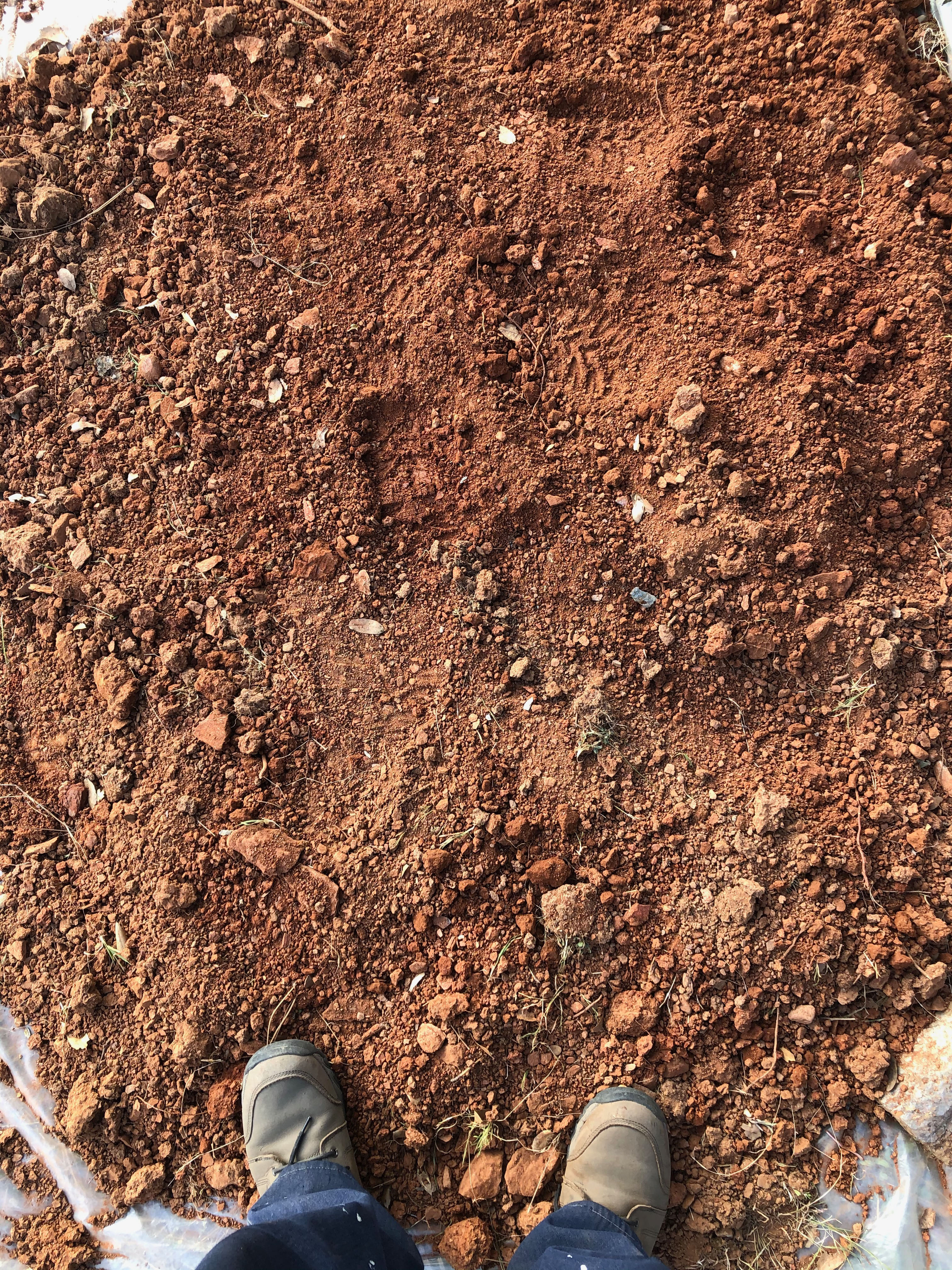 |
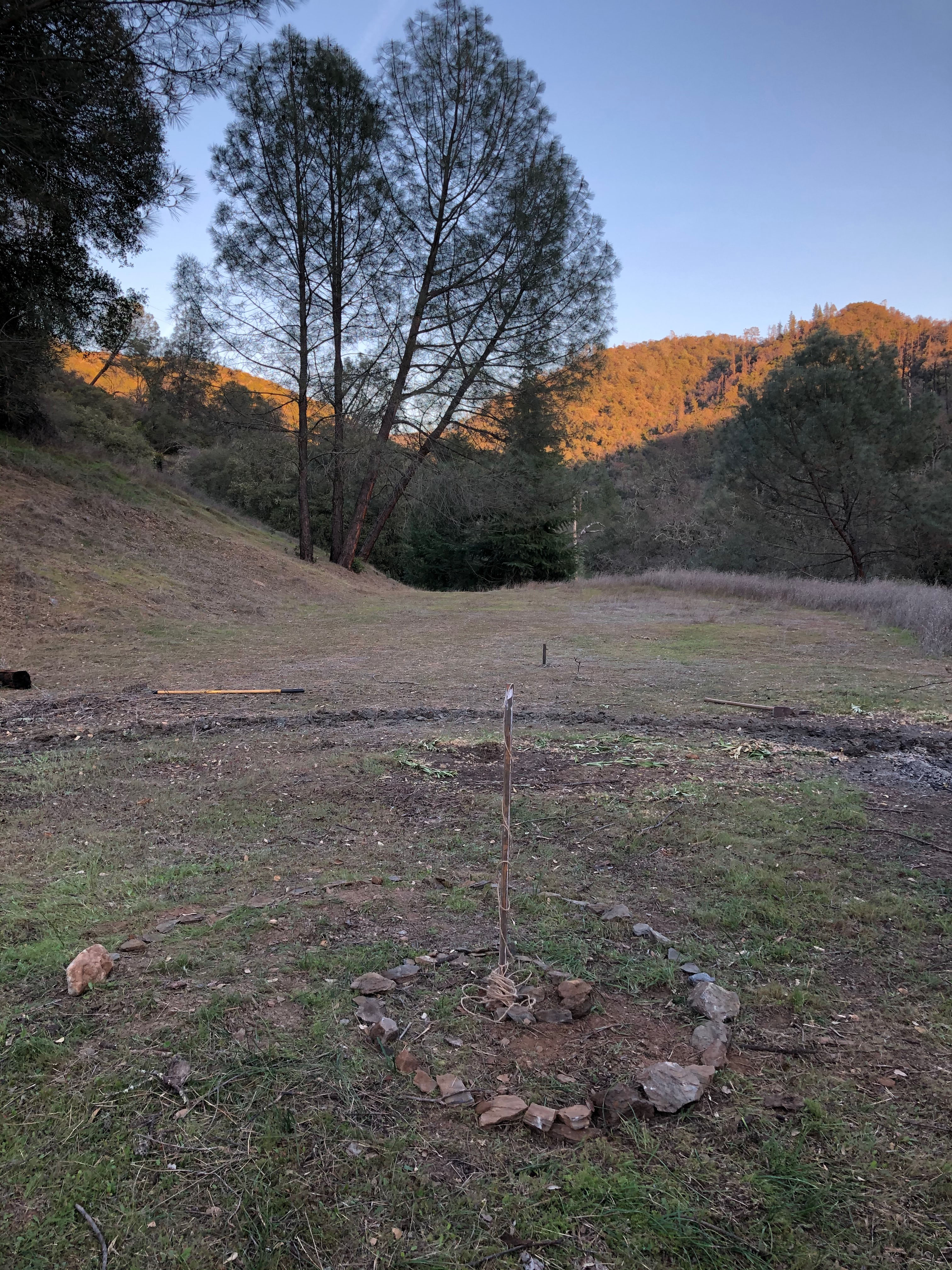 |
Raw clay before processing. I first saturate the clay with water and allow it to sit for at least 24 hours. Then mix and tumble with a concrete mixing blade attached to a drill. |
The site with guidelines dug and placed. |
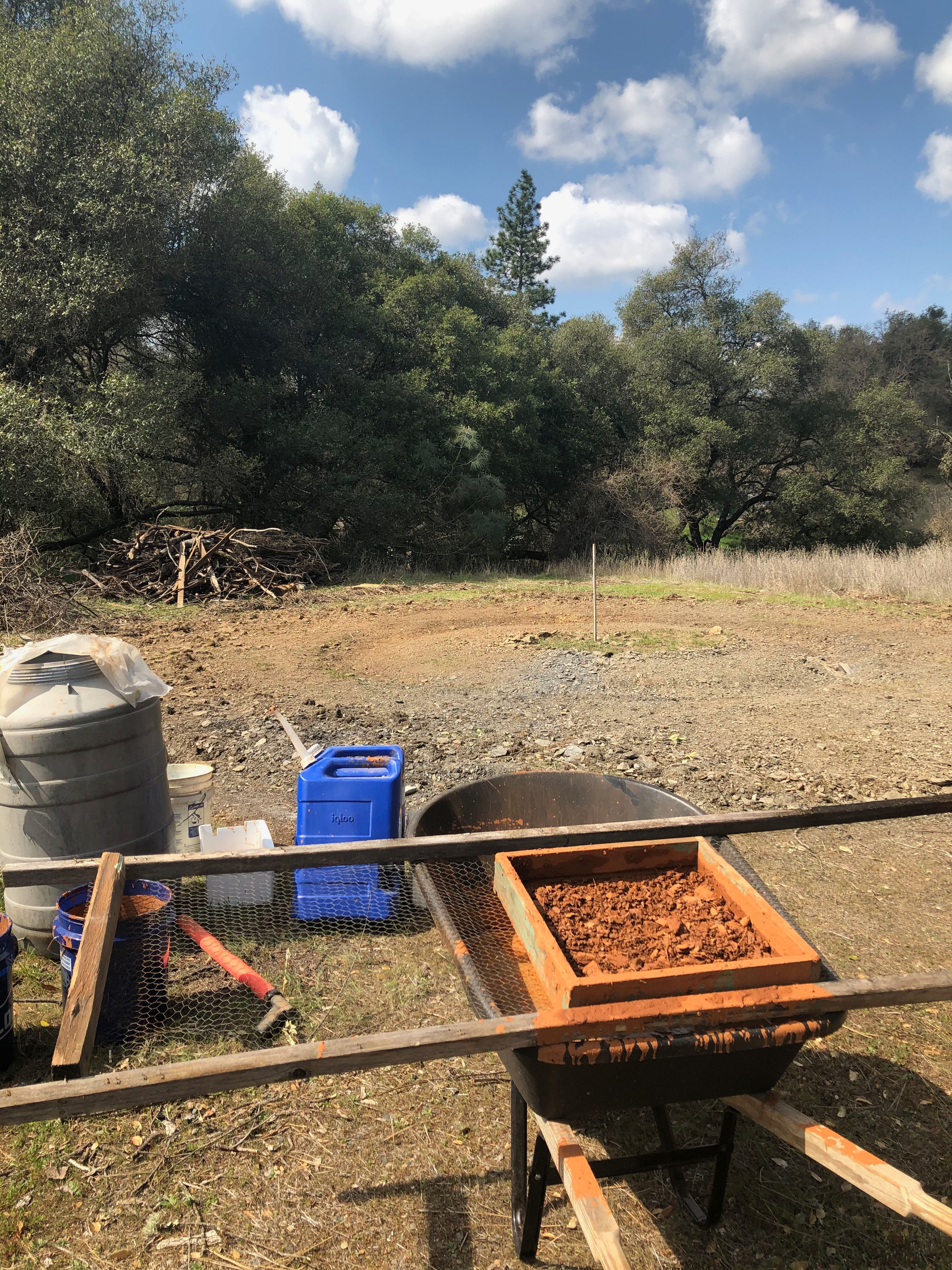 |
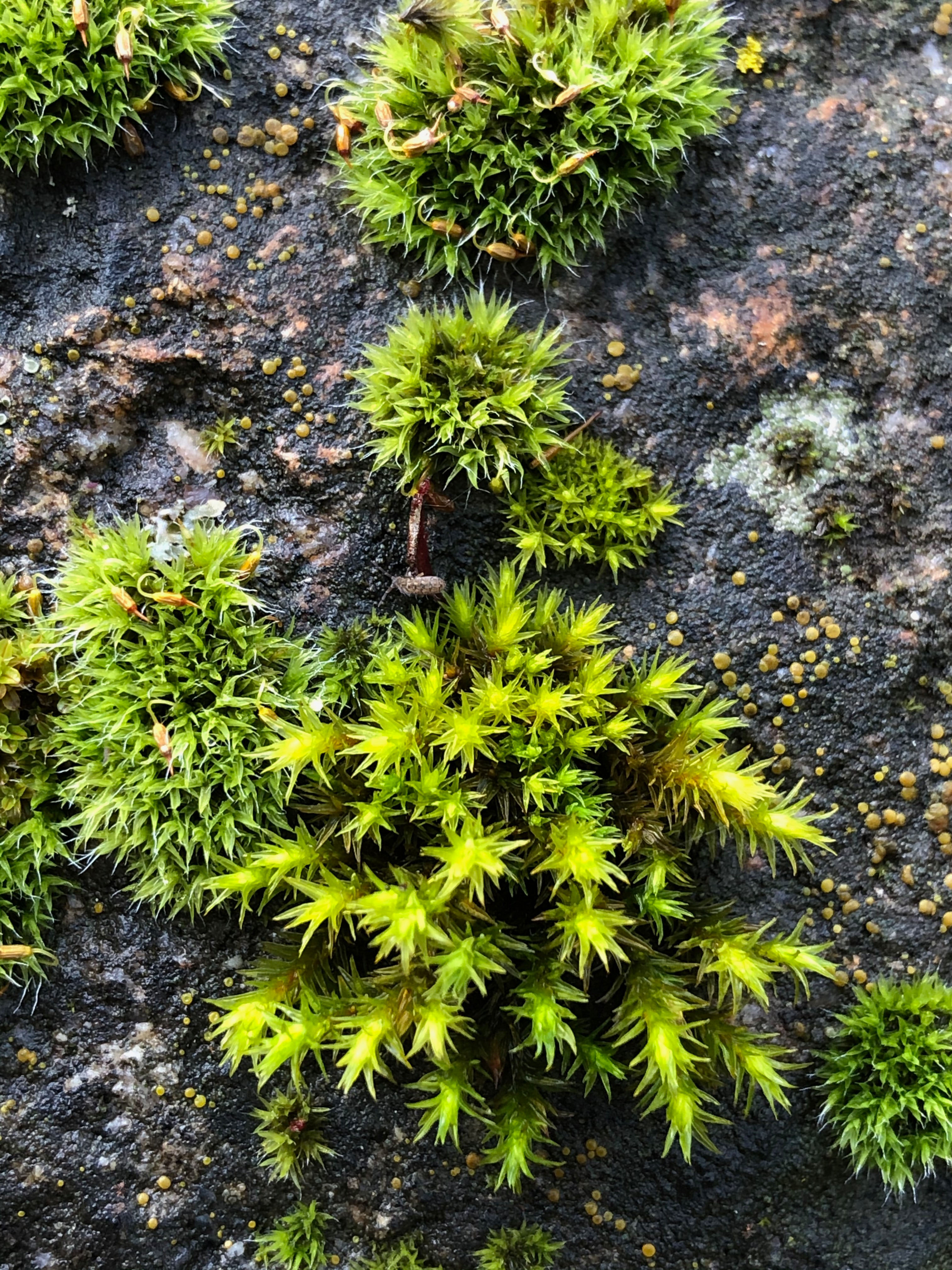 |
The slurry is poured through a screen sieve and left to settle for 24 hours. |
A stream fed by snows in Stanislaus National Forest runs through the valley, creating a humid microclime that rises 50 feet up the sides of the cut and entices stag lichen and wooly moss to clothe trees, sheds, rocks. |
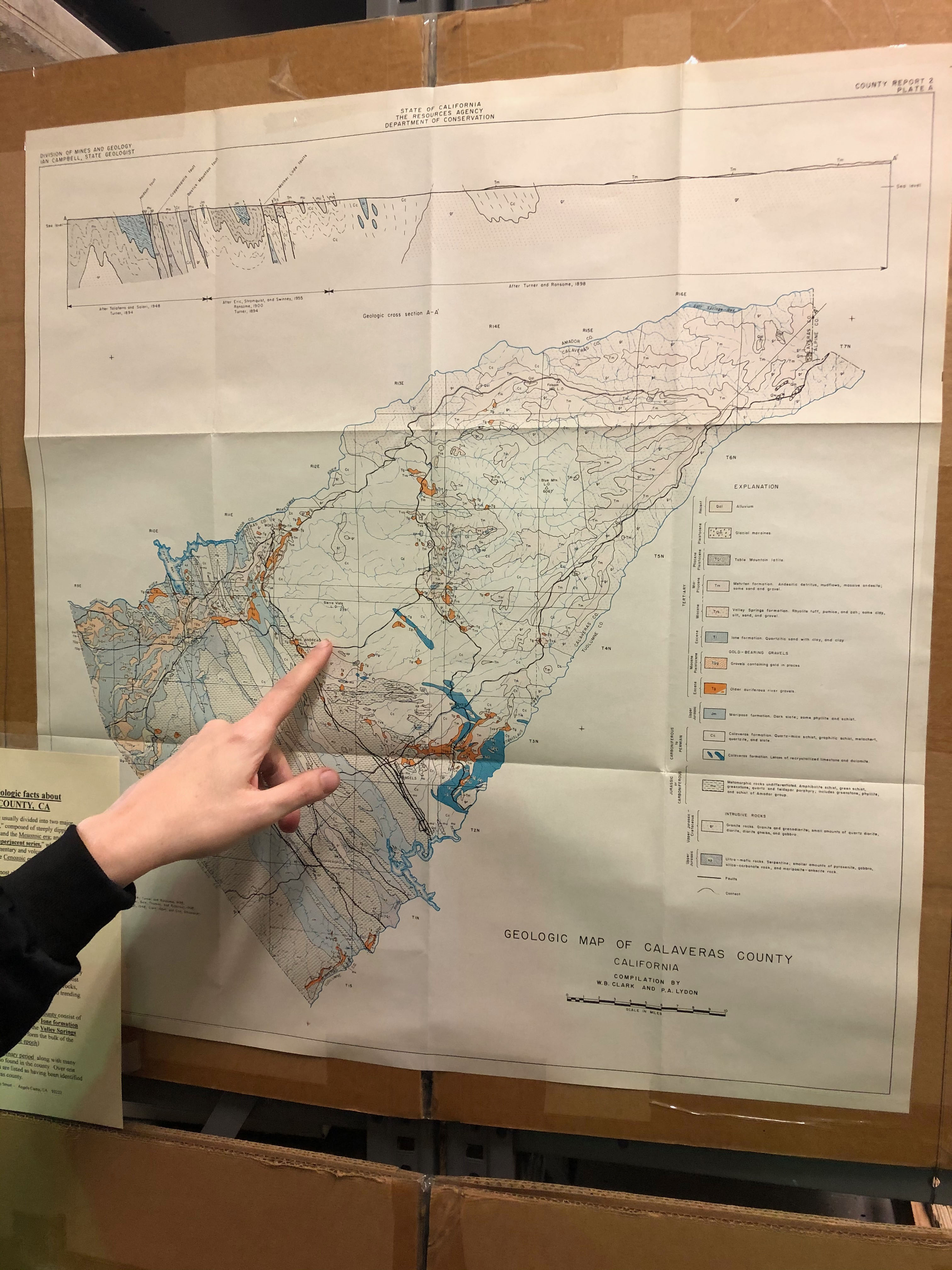 |
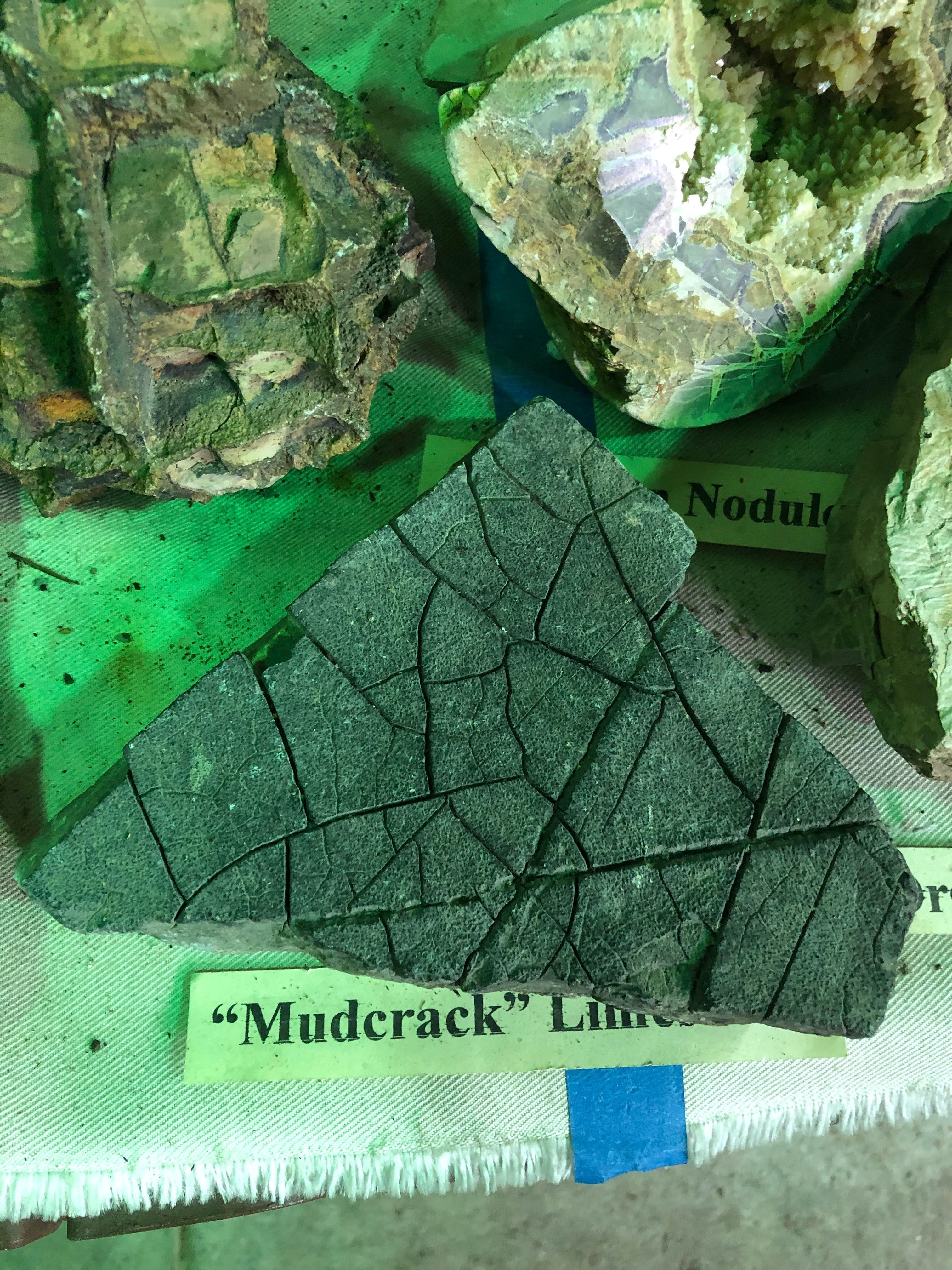 |
Geological map at Stories in Stones, an incredible rock shop in the nearby town of Angels Camp, best known for hosting an annual frog jumping contest inspired by Mark Twain's The Celebrated Jumping Frog of Calaveras County. |
These cracks reemerge. Cracks always emerge. Individuation is the eventuality of aggregation. |
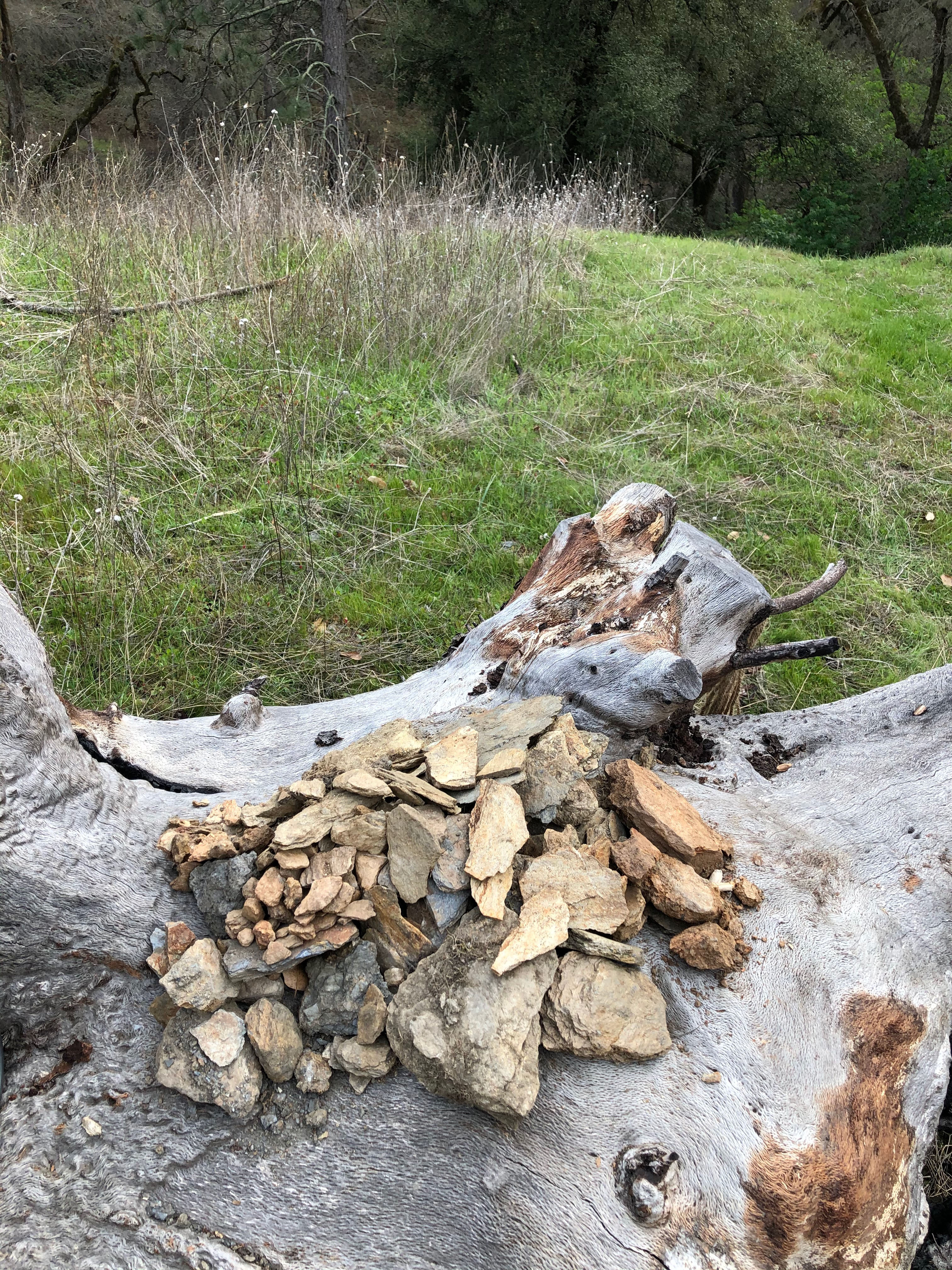 |
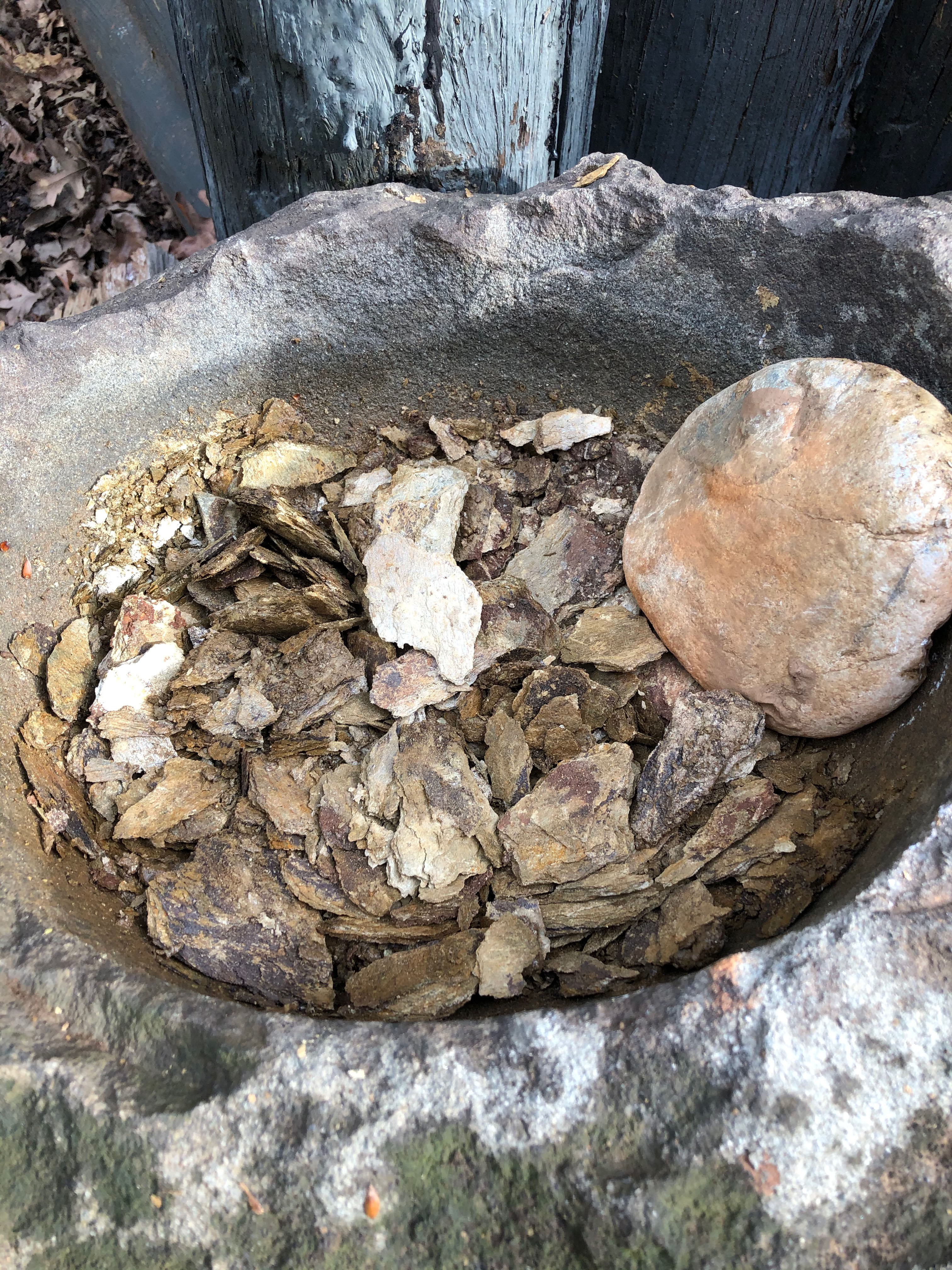 |
Golden schist dug from the site of the kiln. The burned out trunk of a blue oak, remnants of the 2018 Butte Fire acted as my work bench. | Schist in bullaun stone. These hollowed stones sat around the cabin, collected by the family that built the complex of cabins in the early 1970's as a retreat from a Peak-Oil apocalypse. These mortars were used by generations of Me-wauk peoples to grind acorns that dropped from the orchards of blue oaks maintained by fire. I thought if what I did was wrong, to bring these stones into use. Is this a precious object that should be archived? Or is its removal from use sacreligious? Should it be returned? Would its return from stolen land be anything aside from an empty gesture? |
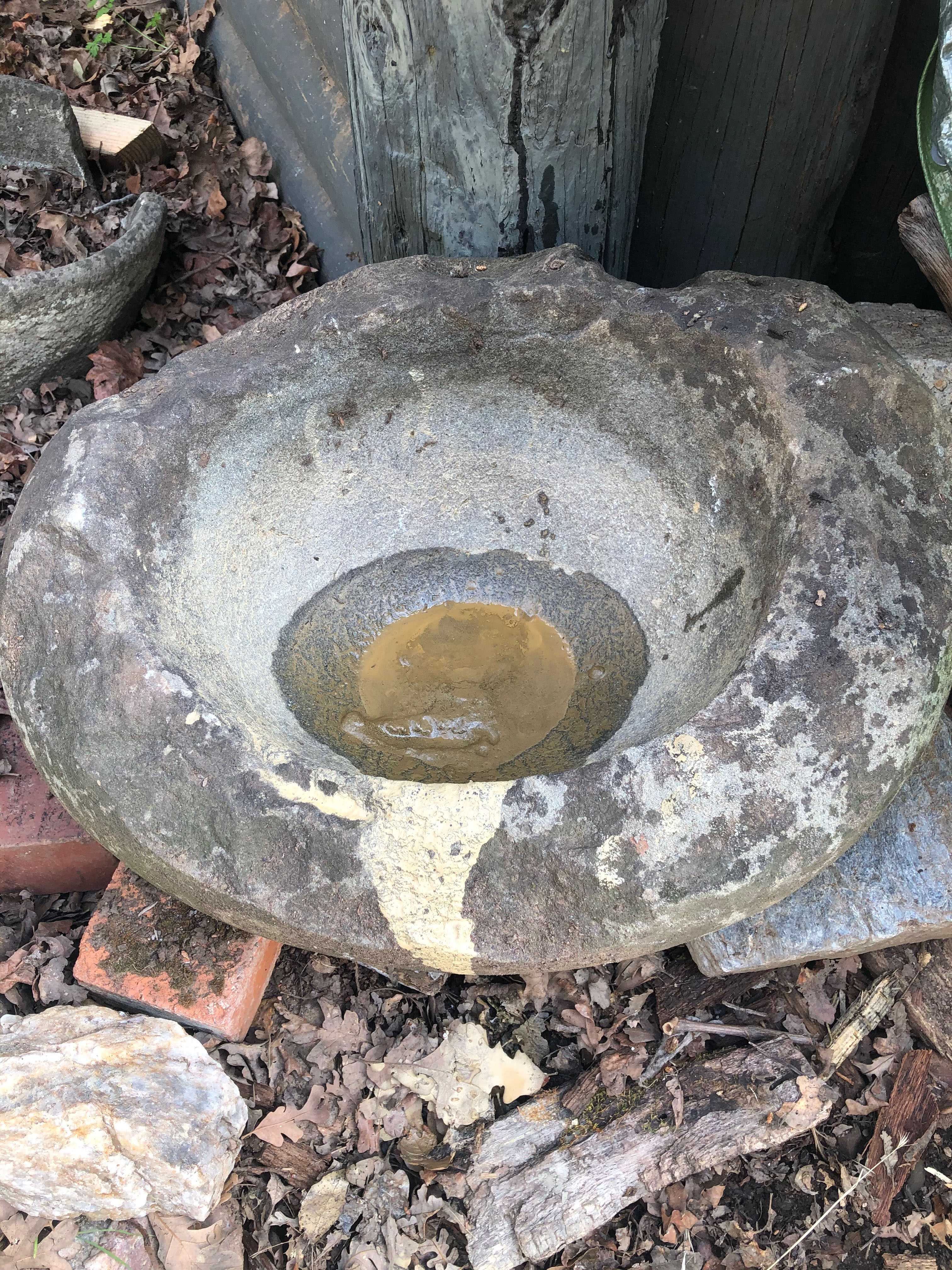 |
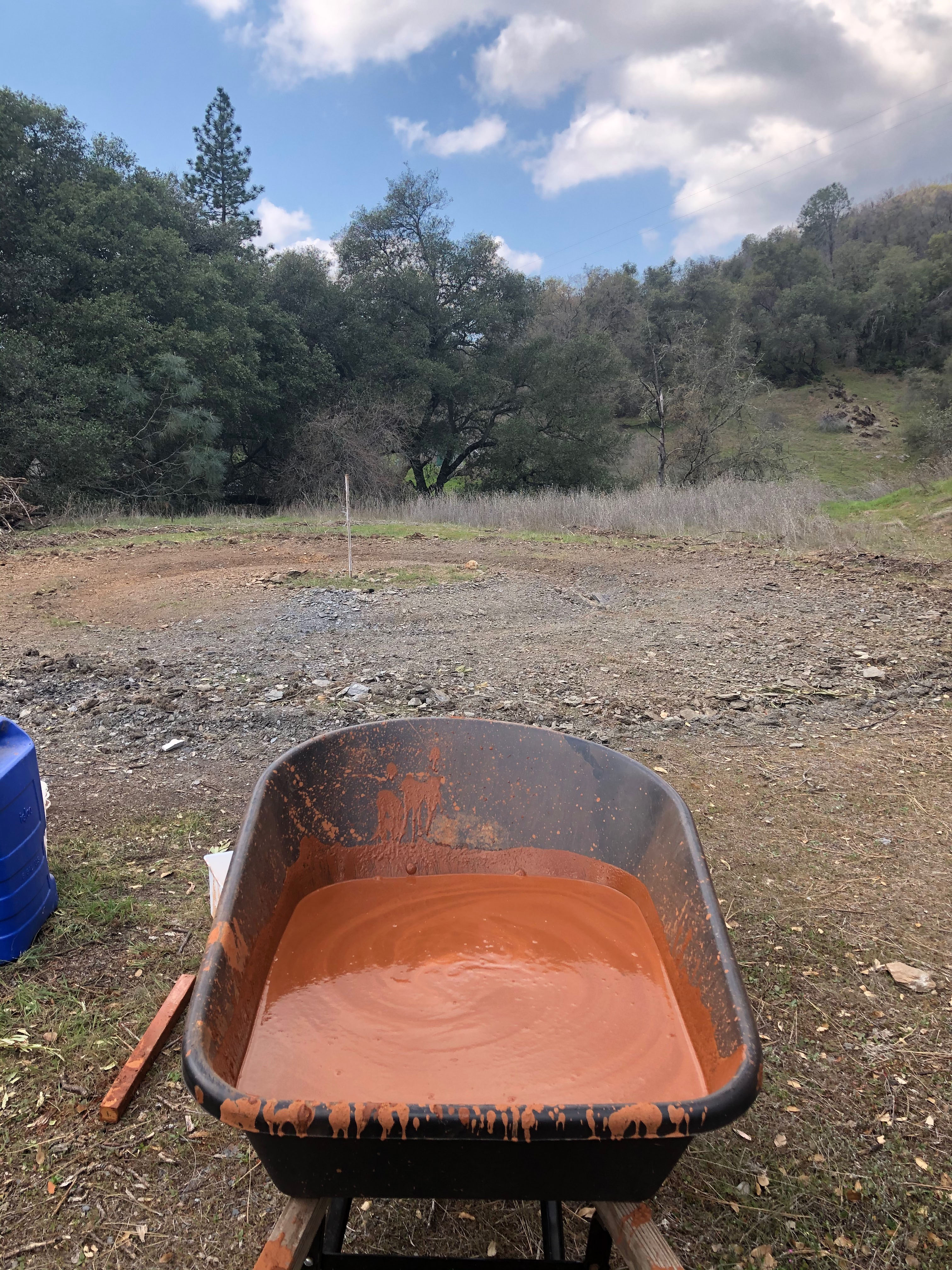 |
Does the object diffuse in disuse? As a garden curio, does it not die in representation of what was? | Clay slury with excess water poured off. Next, it is poured into a linen drying rack. The clay sautrates and expands the linen, the water seeps through and evaporates off. After a few days, the clay is dry enough to work. |
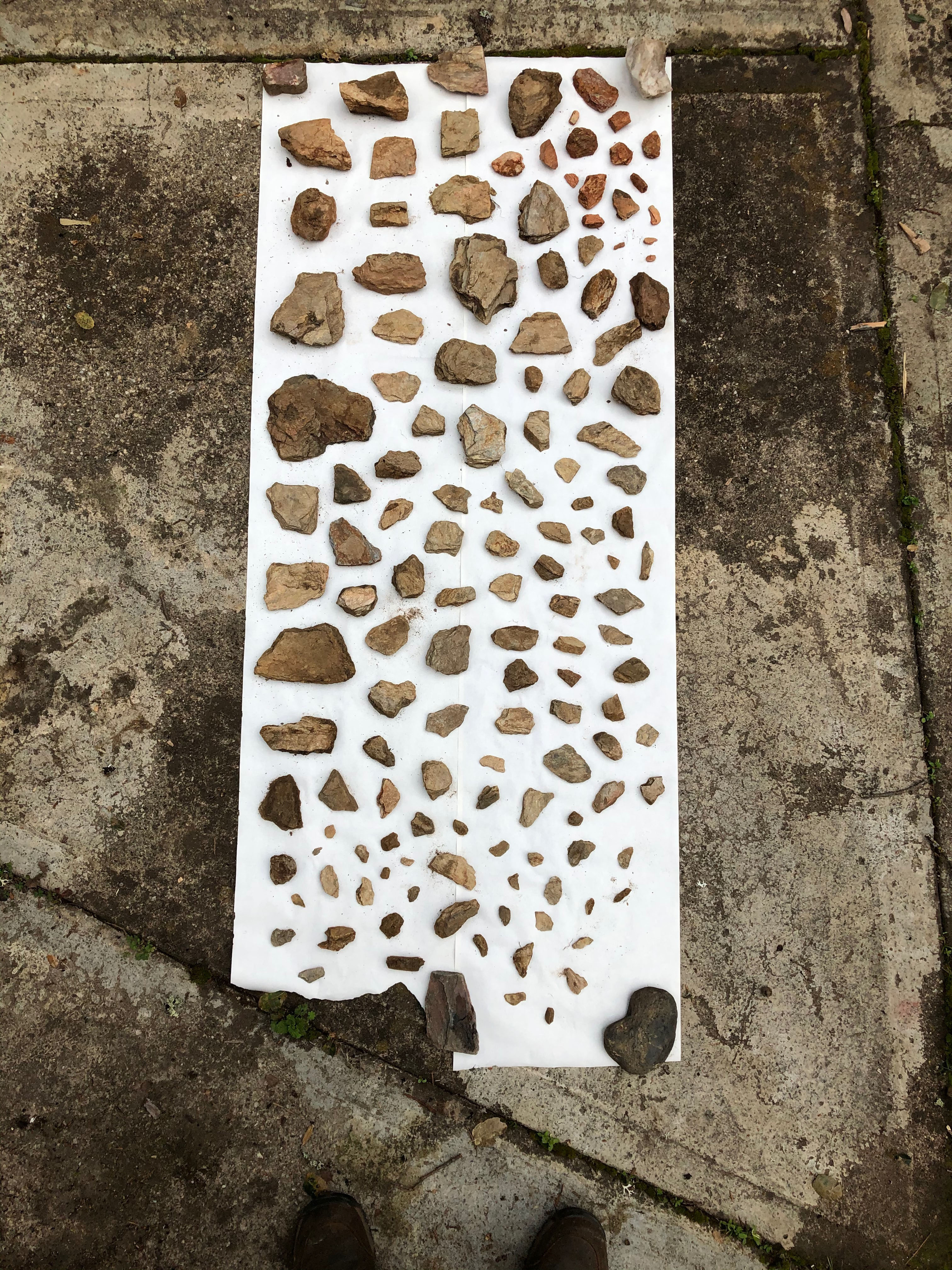 |
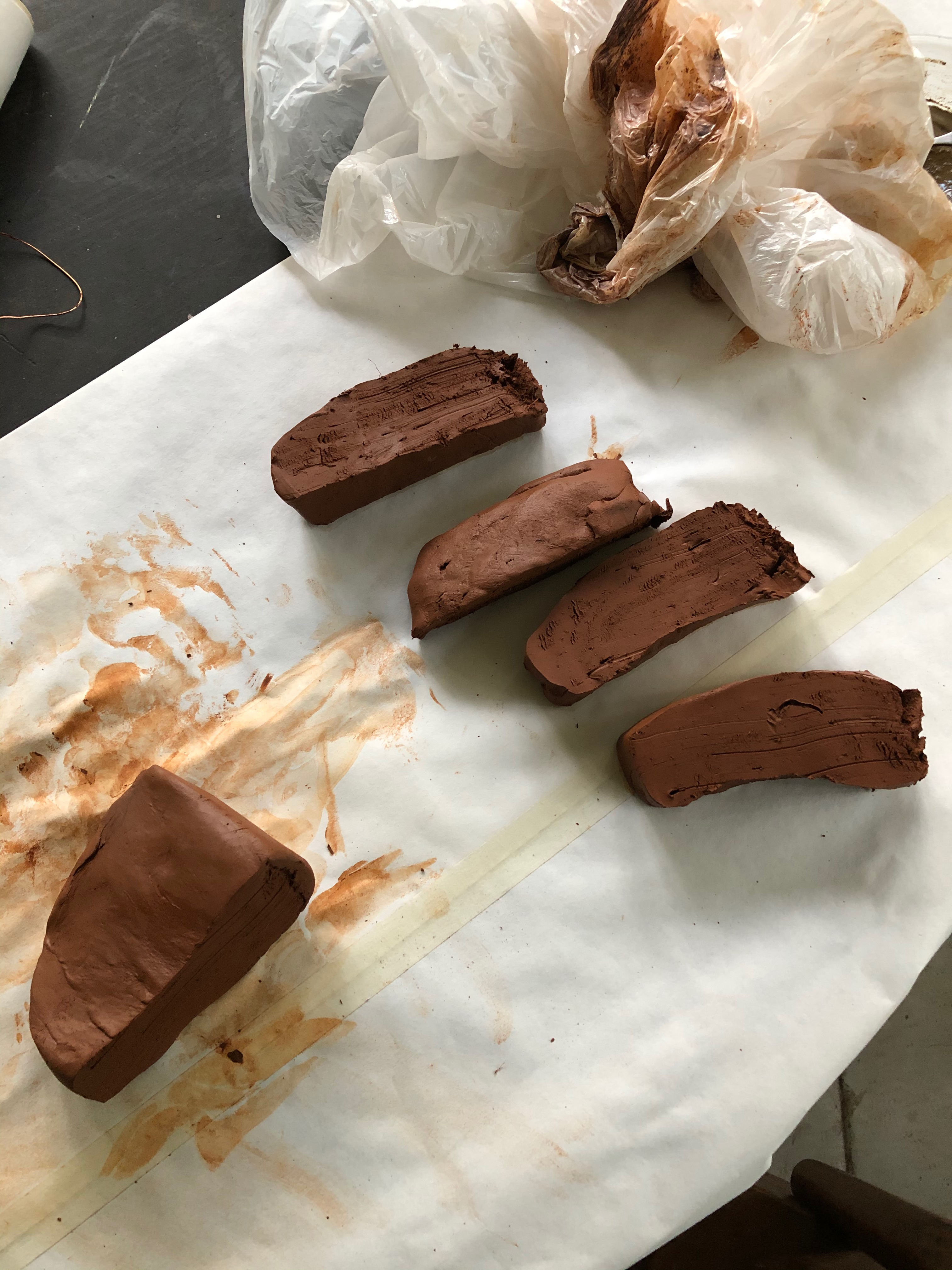 |
I laid out the schist on sheets of paper to take a rain print. I left this outside to be rained on by the steady rains of March. Residual clay on the rock and weakly bonded particles shed from the stones, dying the paper. I called them rain paintings. | Processed autochthonous clay. I used this clay to make small totems, something hand-held. These totem excercises develop an intimacy with these small clumps of earth. Between the particles of clay and my skin, we develop a knowledge of each other. |
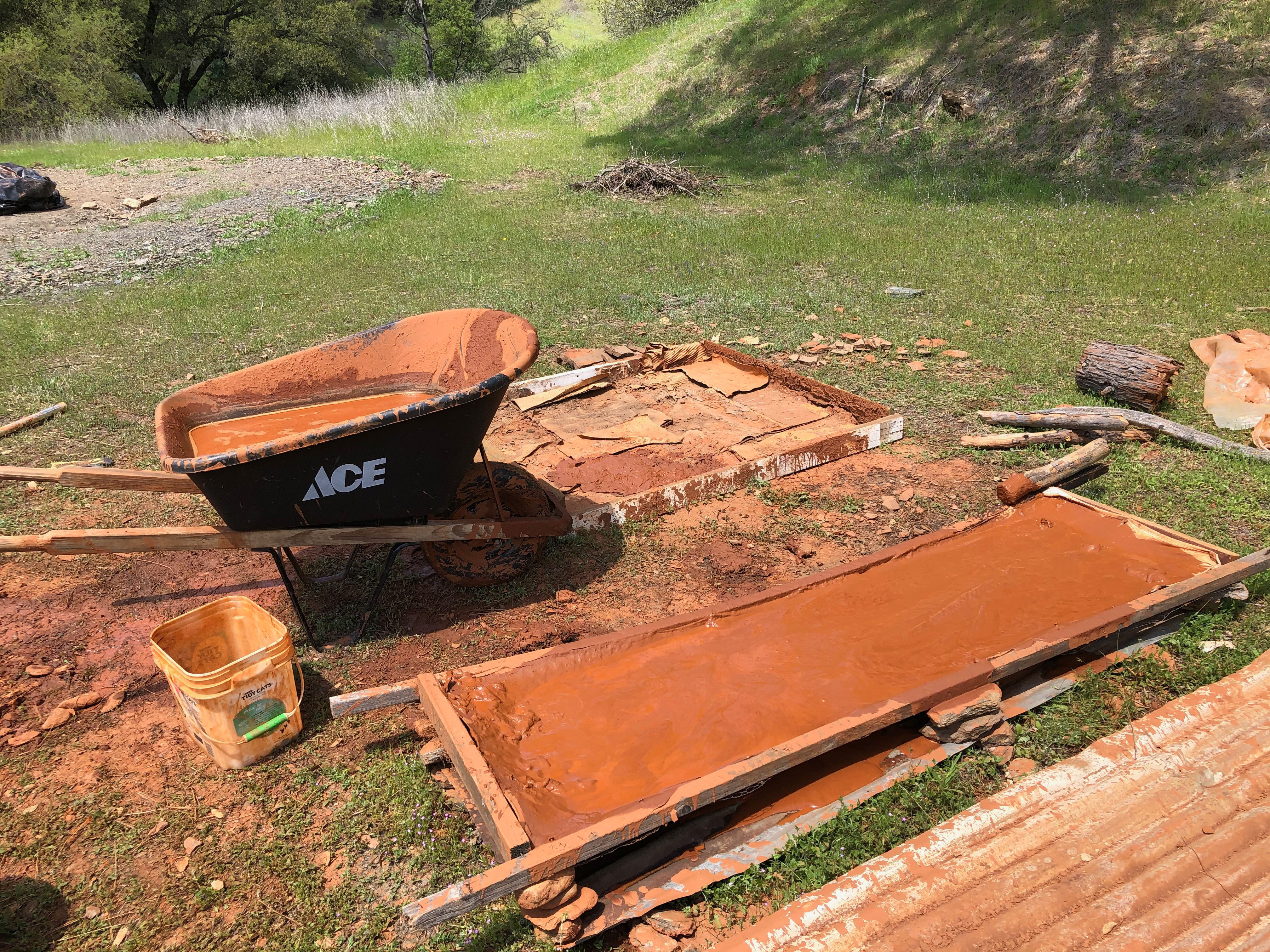 Clay drying racks built from scrap wood, cardboard, and flour sacks. The site where I dug clay was at the bottom of the artificial flat, 50 yards away. A wheelbarrel at a time, moved around 800 lbs of clay. At this point, the COVID-19 pandemic was rapidly spreading around the country and the directors and I decided it was best to limit exposure to the outside world. Grocery and tool trips to nearby San Andreas were reduced to every two weeks. Produce was washed, packaging disinfected and discarded. Within our remove, a paranoia developed, a fear of the outside world, whatever the outside was, where people were. The people were now outside. Dirt and rocks and bugs were safe. |
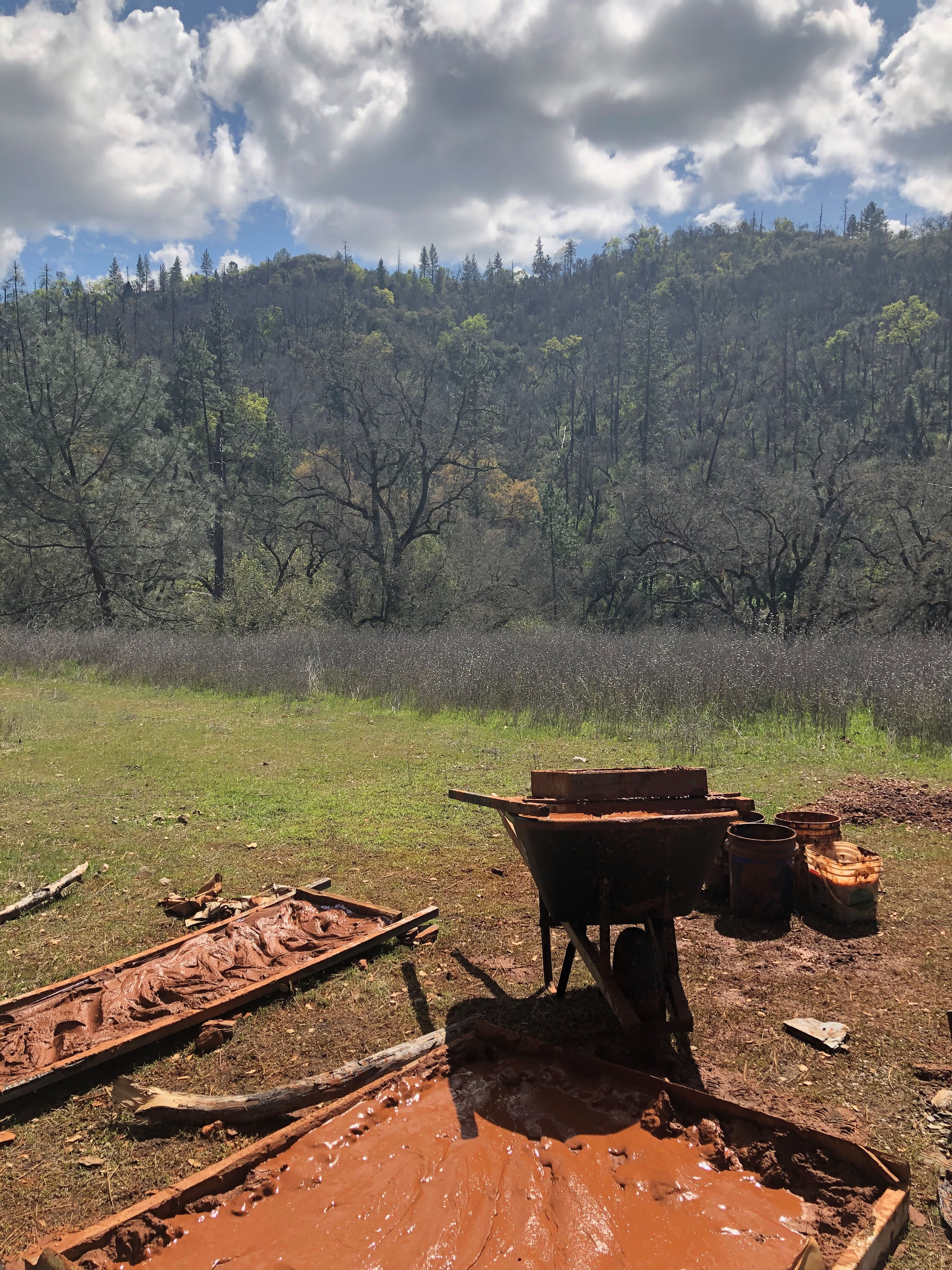 At the same time, in our crook of a valley, the charred remains of the ancient Ponderosa and Oak forest across Murray Creek are a daily reminder of the precariousness of this place. Horse chestnuts bush out from the steep walls of the valley, invasive species run with the opportunity to create a new canopy. The "natural world" recovers, the built world will recover as well. |
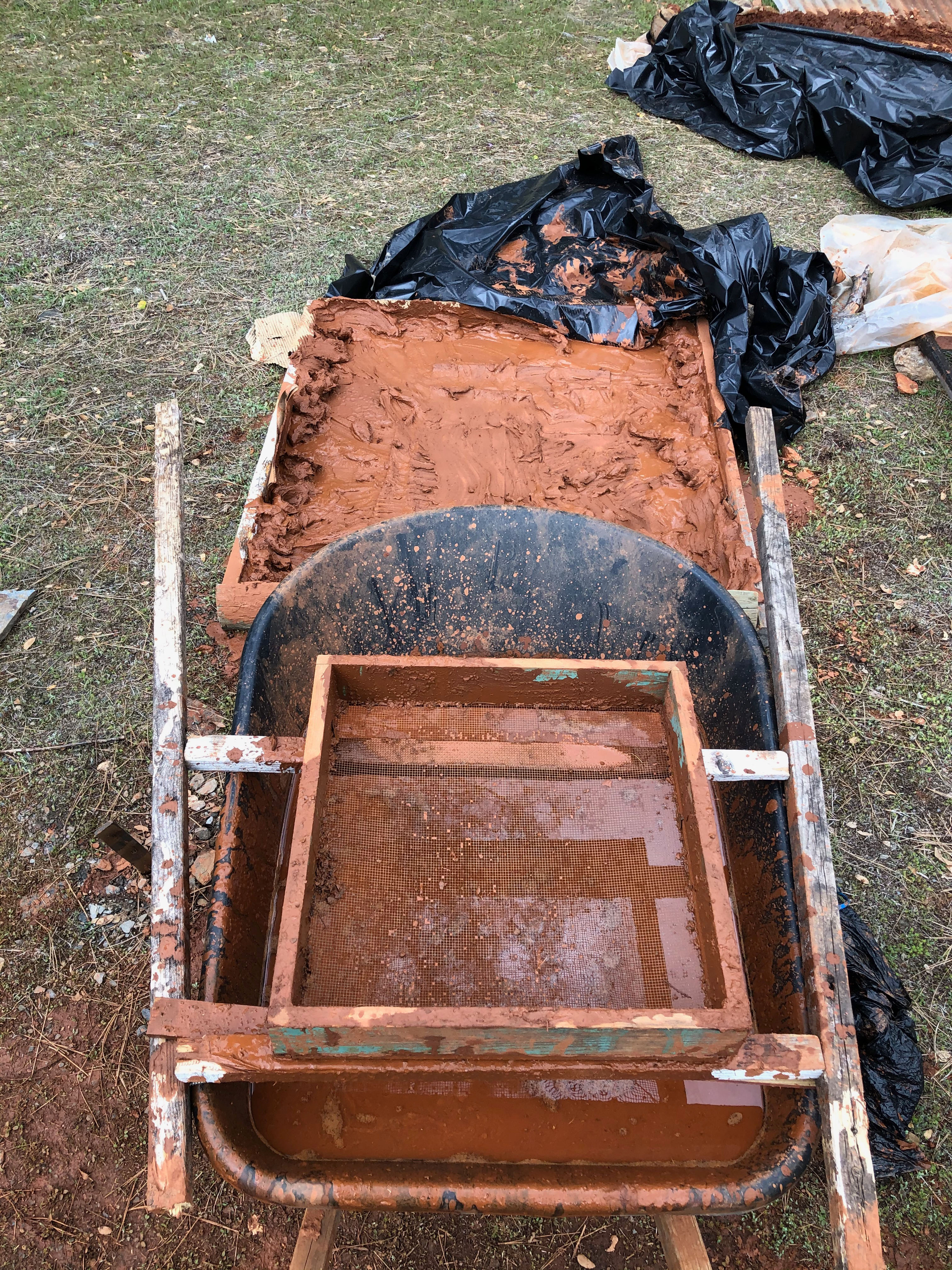 The screens I found on the property were used by the previous tenant/handy man/lumberjack who has taken care of the property over the last decade or so to sift for gold flecks in the creek. He said he's found some here or there and recommends it as a fun way to kill an afternoon. |
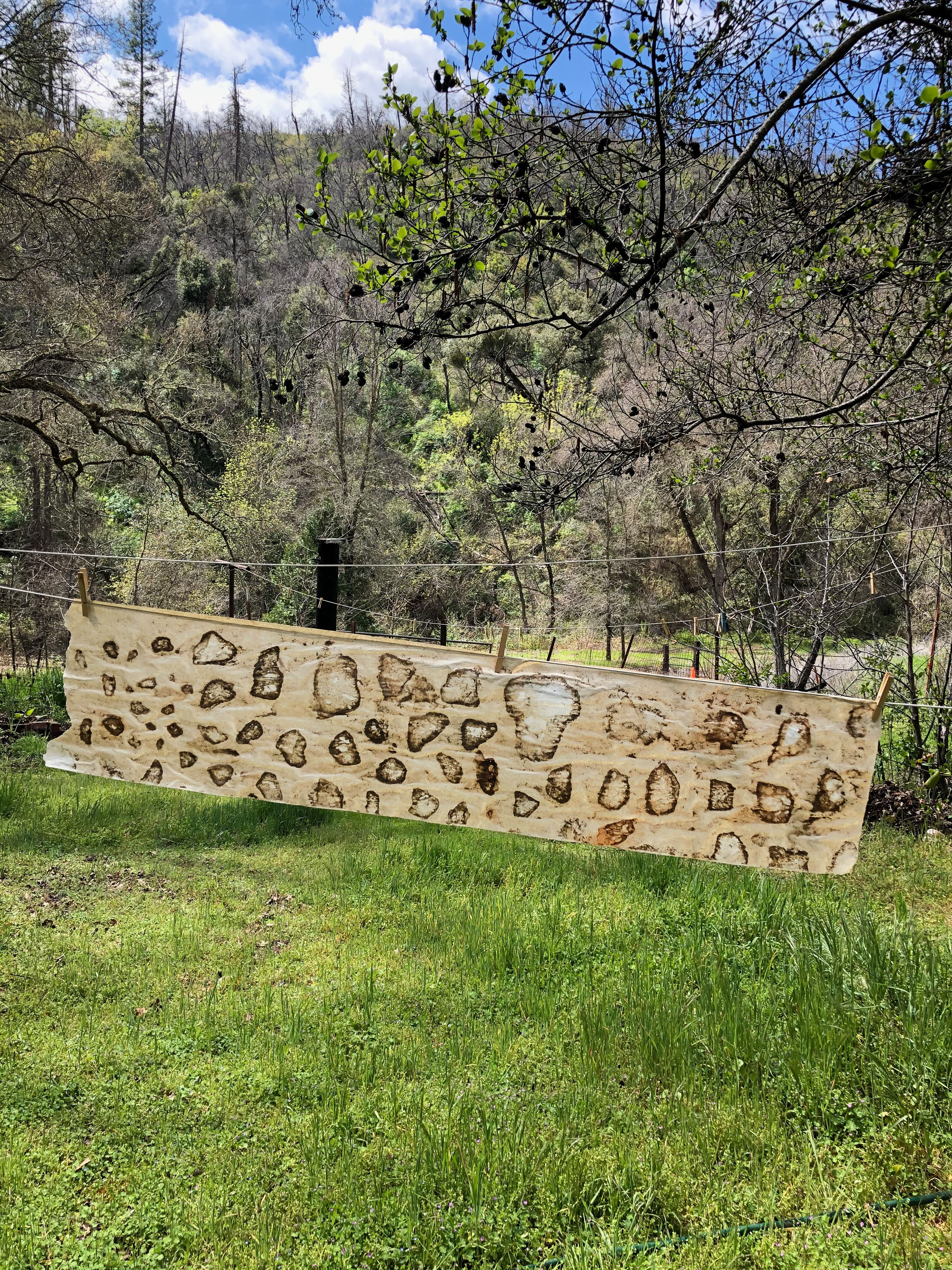 The rain paintings were 'done' after two weeks thanks to a stretch of drizzle that yawned over the days, deafening our energies. Rain here, when it came, didn't stop. One night it began and the sun didn't return for a week and a half. The creek swelled and the narrow stream that flowed past the house became a rushing torrent, flooding the gravel road that connected the property to the outside world. Worried it would wash out, we all donned rubber boots and ponchos and headed out with rakes and shovels to try calm the tremendous force of the water. |
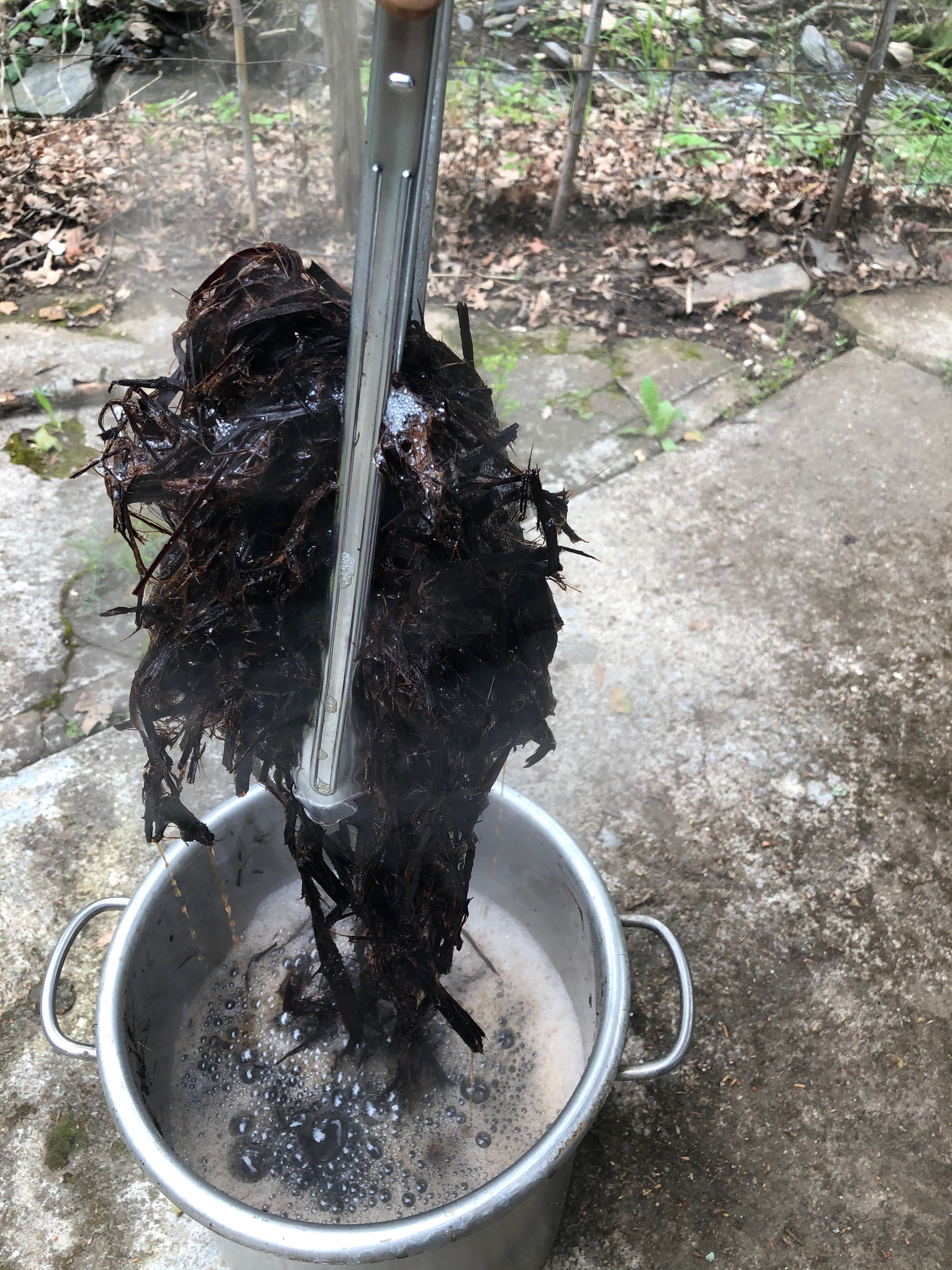 During the rains, I decided to try to make paper. I collected hardwood ash from the wood stove and set up a dripline from the eves of the house so that rainwater would slowly percolate through the alkaline ash to create a rather strong lye. I then gathered cedar bark, pounded it with a wooden mace fashioned from a gnarly burl that goidered a tree limb. 12 year old me would have been impressed. I smashed the bark against concrete until my elbow felt brittle then boiled the mash in the hardwood lye on a grill on the patio. |
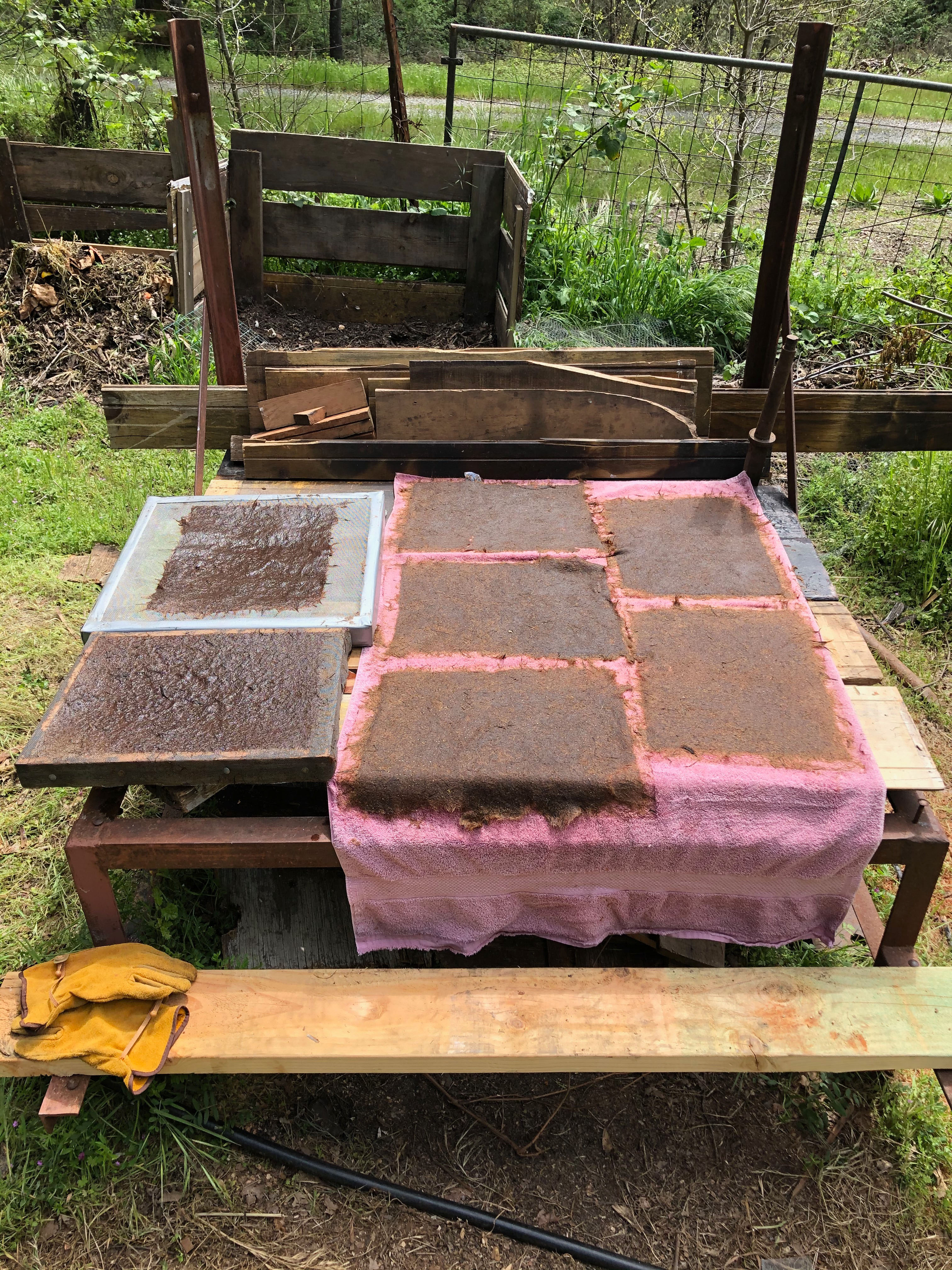 I took some of the ground golden mica I had been collecting and added it to the cedar pulp. I used some window screen sieves to pull the pulp out of the solution and laid them out to dry. Getting the right thickness, without the aid of a sizing agent, so that the paper held together when popped out of the screen was very difficult. An exasperated "Paper is hard!" rang through my head repeatedly. Any screw ups went back into the vat to get screened again. |
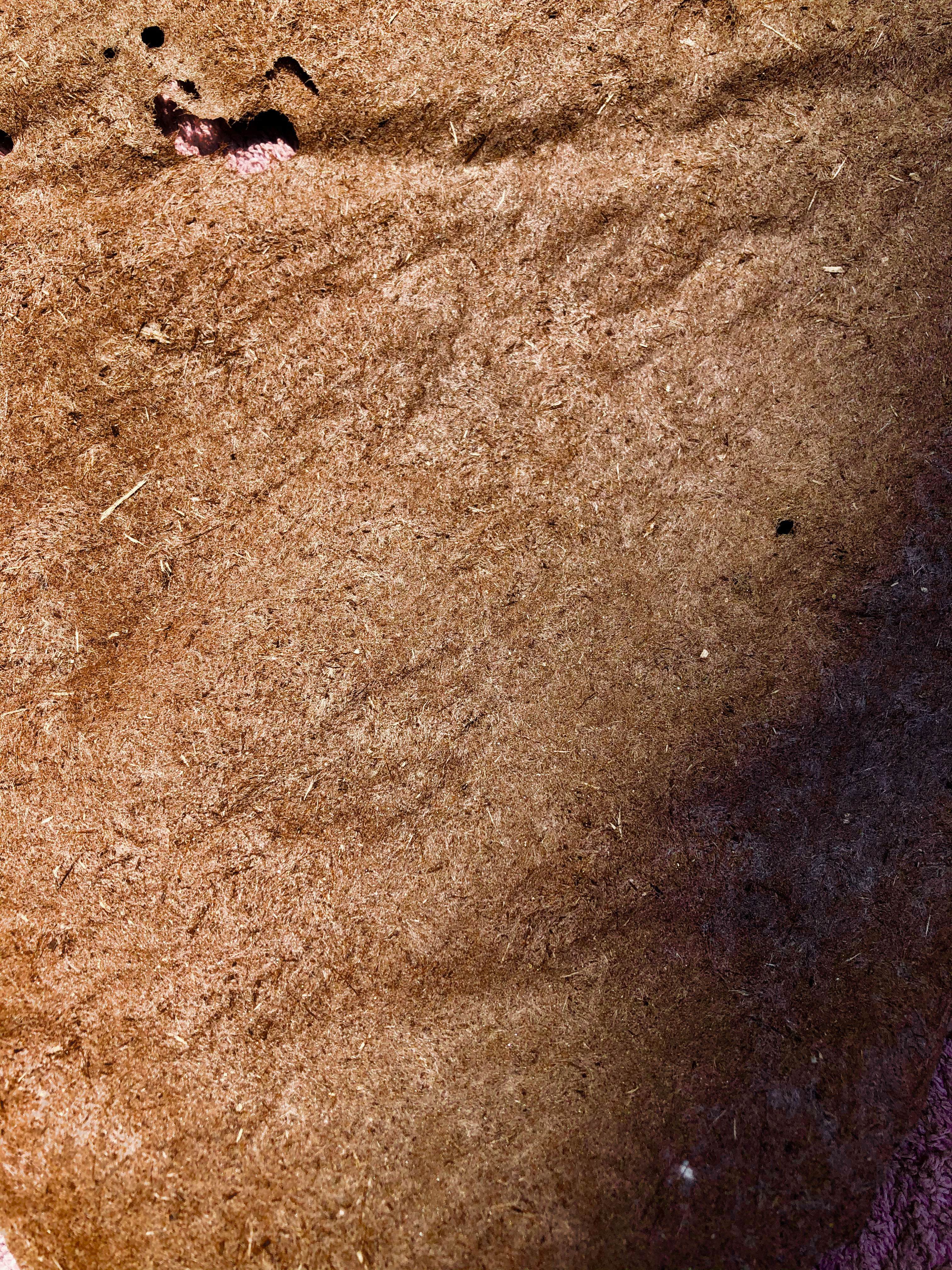 This one wasn't bad. The cedar fibers locked in bits of the mica, a glint here or there. Fibers fed by minerals suspending a latticework of glinting desire. |
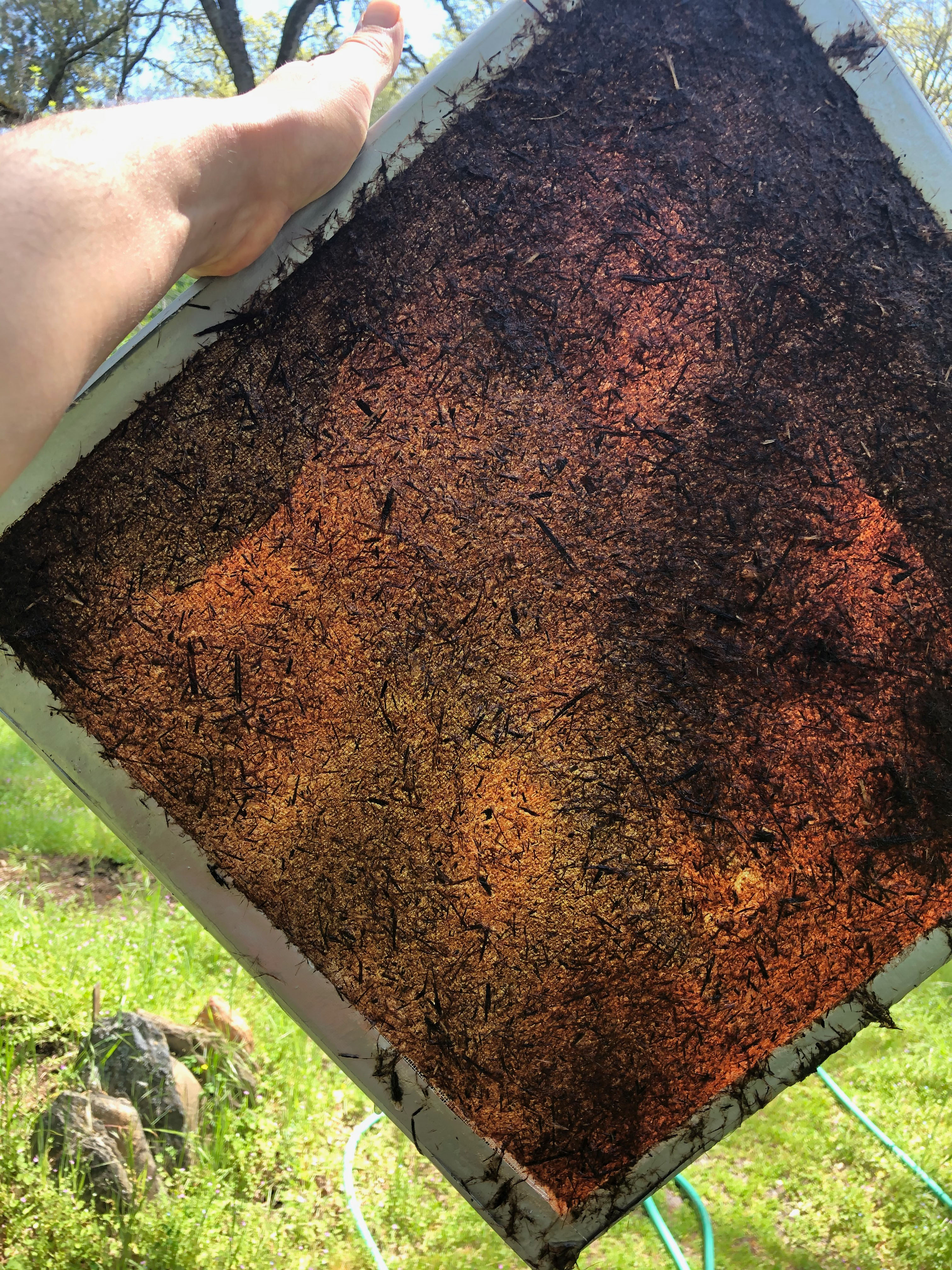 When they were wet, muddled light told me if the thickness was right. This papermaking continued throughout the residency. |
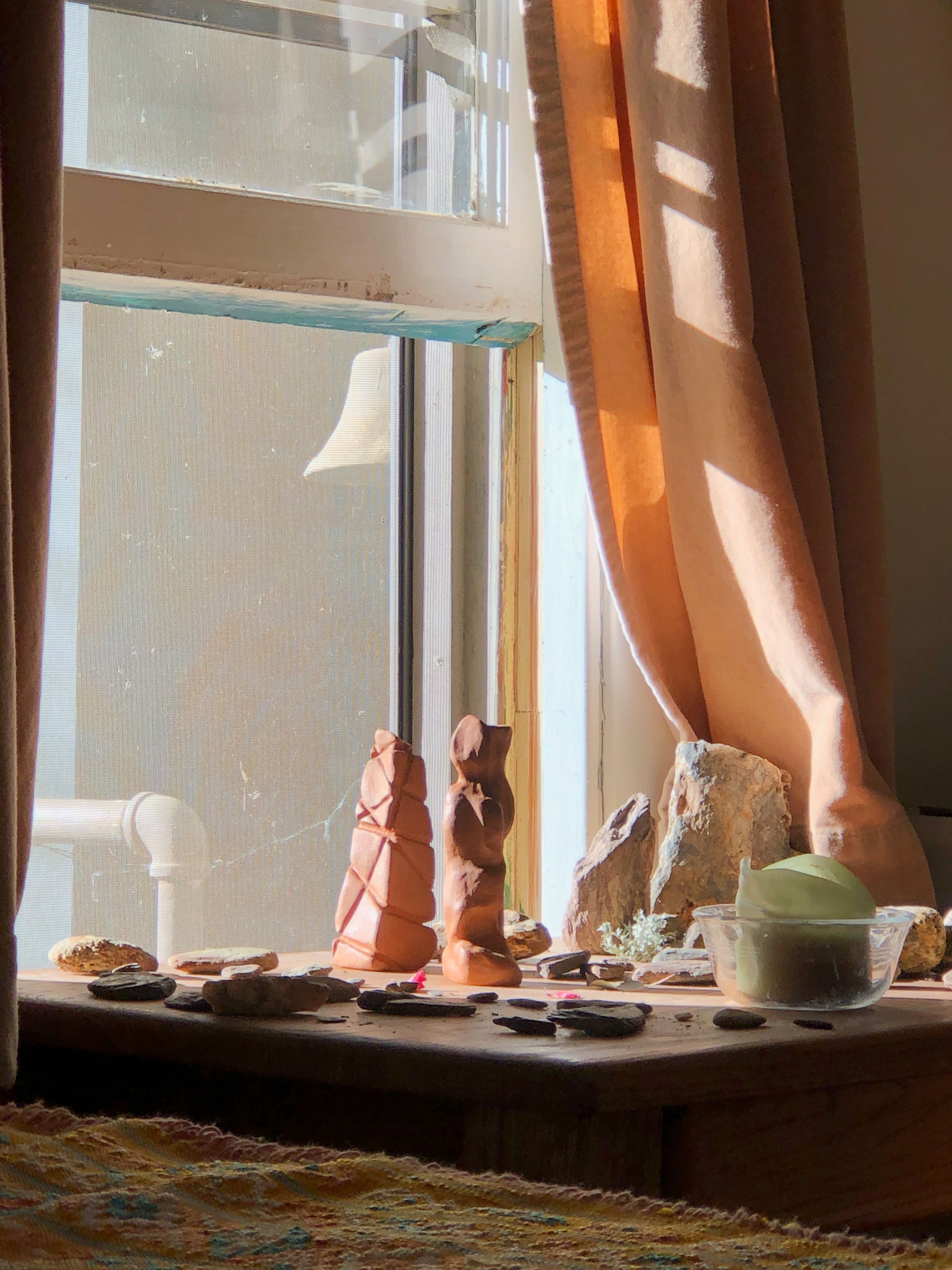 At the same time, I began to experiment with the autocthonous clay |
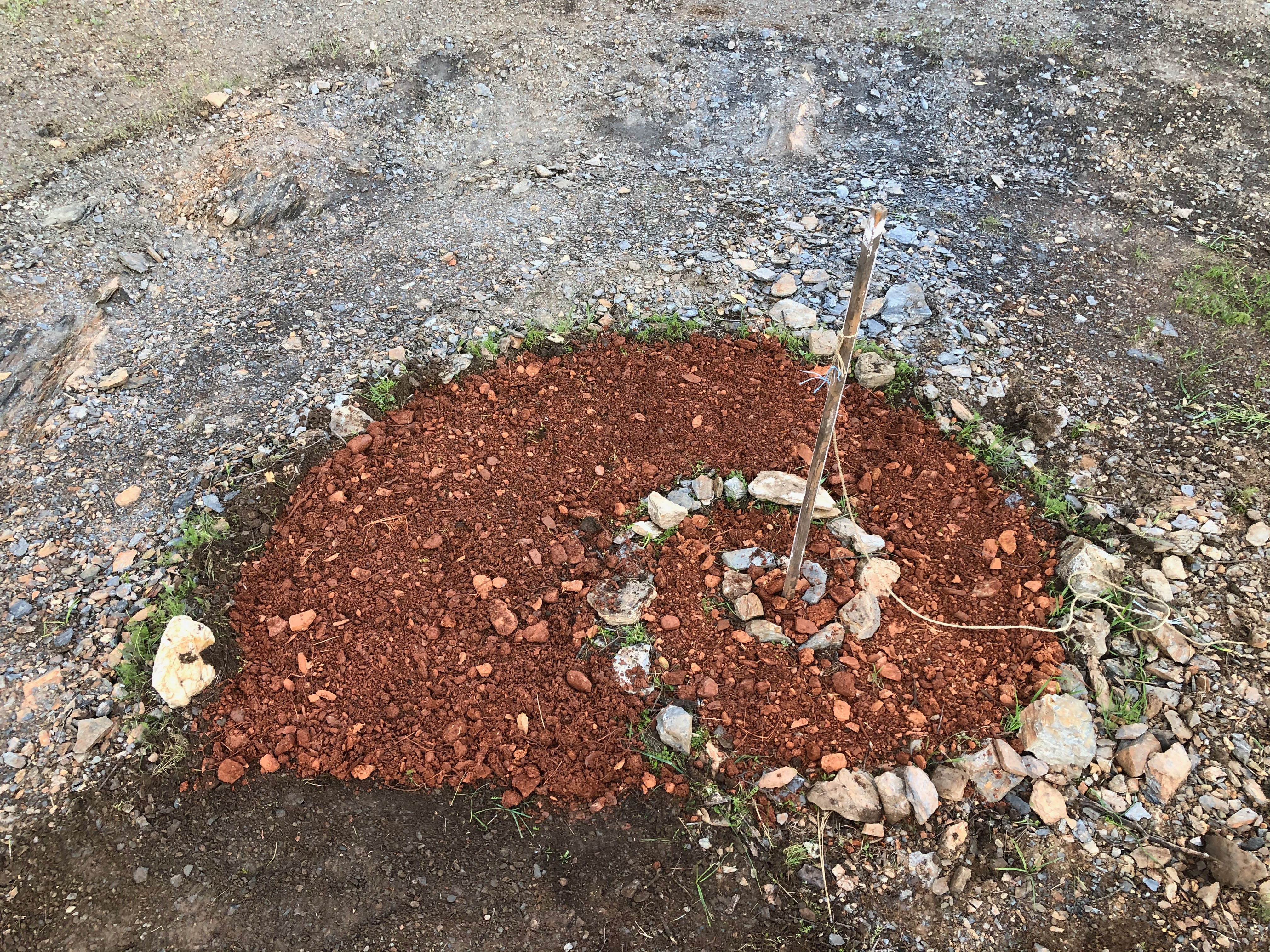
Future, Past, Present. Maybe a way to approach life. A line of consideration: what will this action do/mean/assemble in the future? How does this action sit in the knowledge of the past? What does it mean now, in the current context.
|
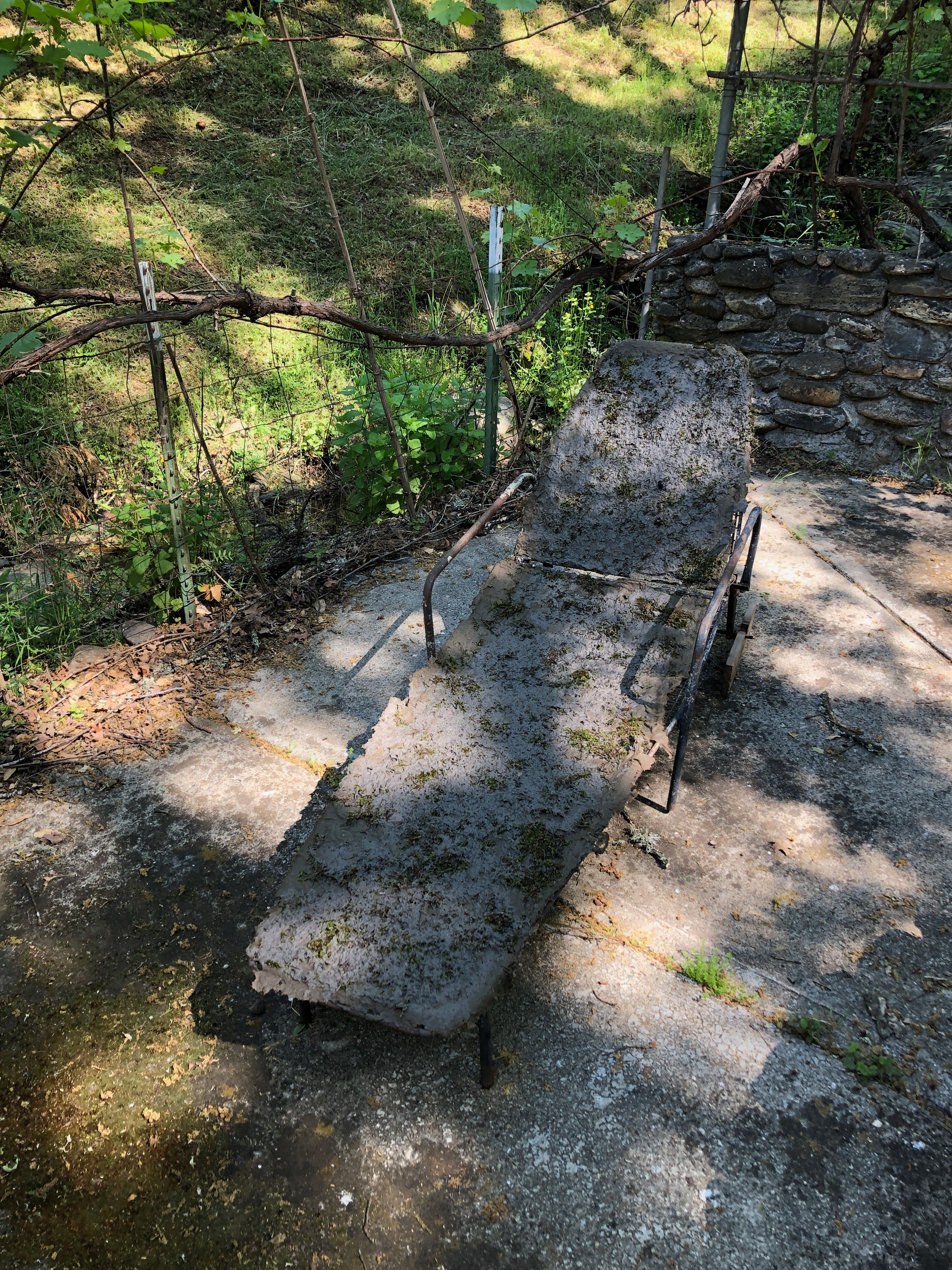 The metal skeleton of a 70's sun lounger sat next to the concrete frog pond where a feral swarm of goldfish dart in and out of a forest of algae-swept moneywort. Cleaning up the moss and chips of bark left underneath the wood pile, the idea of a fuzzy, living recliner popped in my head. The hairy moss could be embedded in egg carton paper and tigthly wrapped around the mesh of the lounger to dry and hopefully grow. |
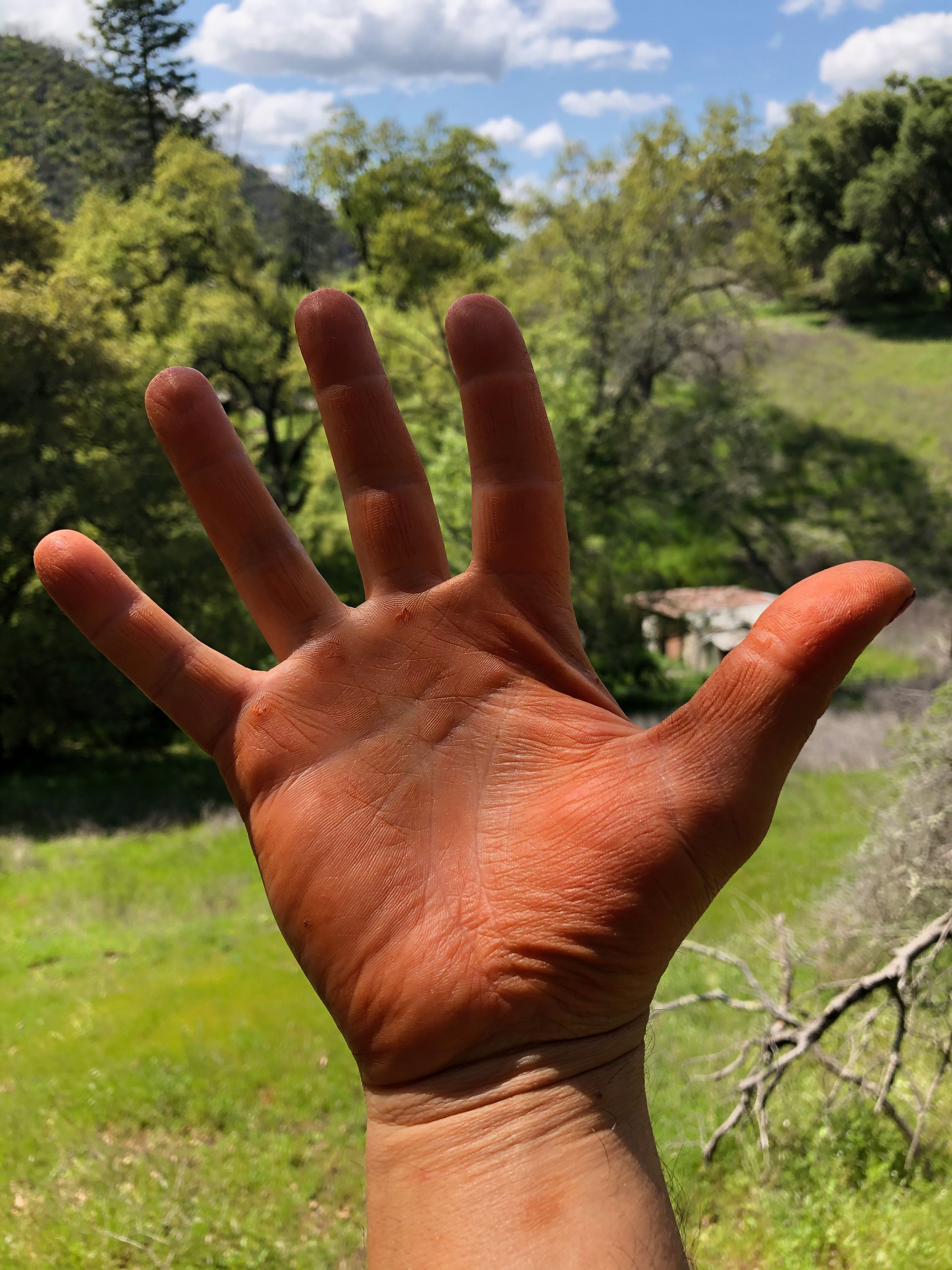 The iron oxides in the clay absorbed into my skin over the weeks of mashing and forming clay. The particles of iron would find their way to my bloodstream, becoming a portion of the 4-5 grams of iron that already flows throughout my body, shuttling oxygen molecules about. |
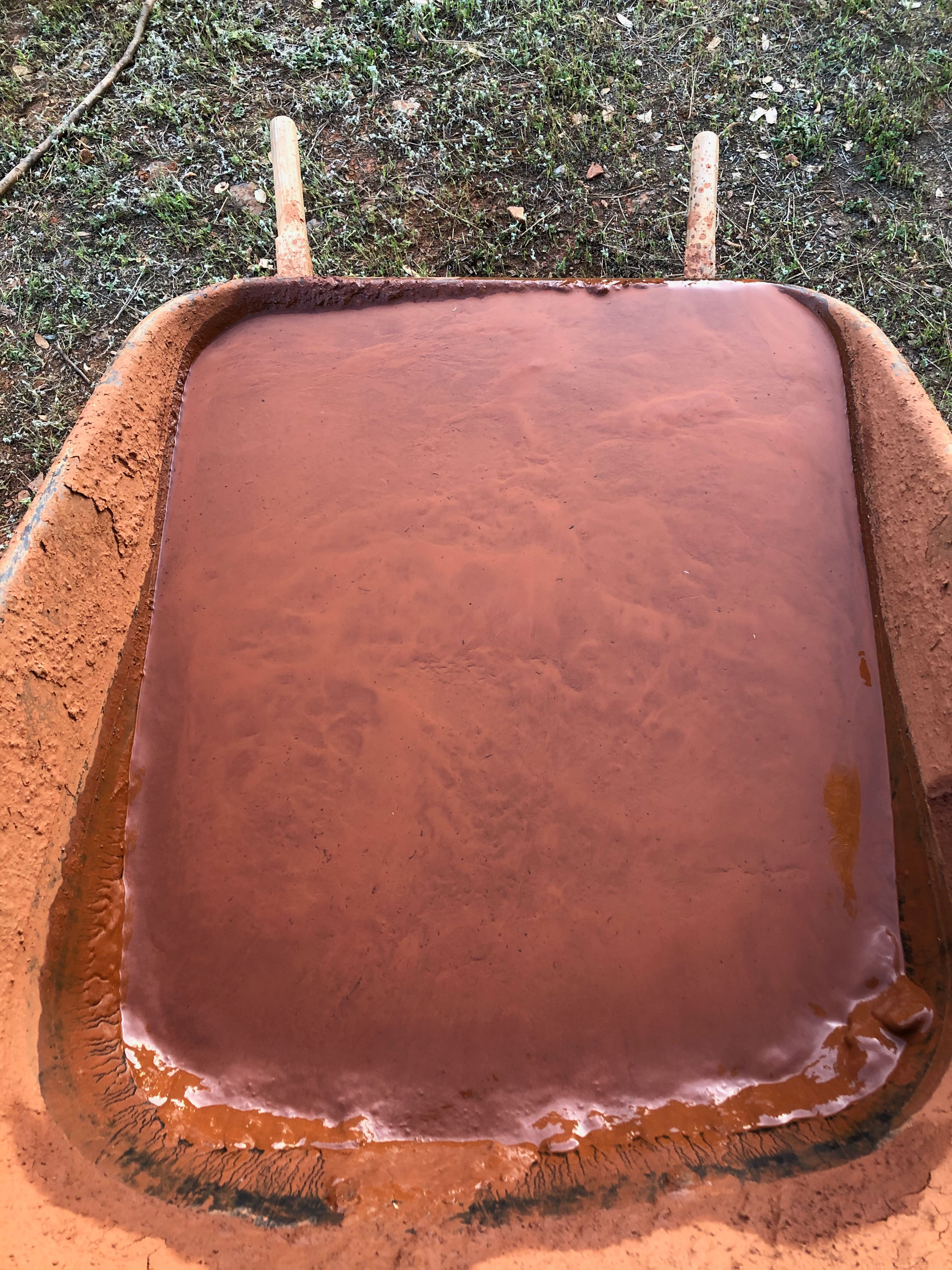 Clay settling after washing and screening. These worlds were incredible, reminiscent of dust storms on Mars, swirls and clouds of the finest clay floating right below a thin layer clear water. |
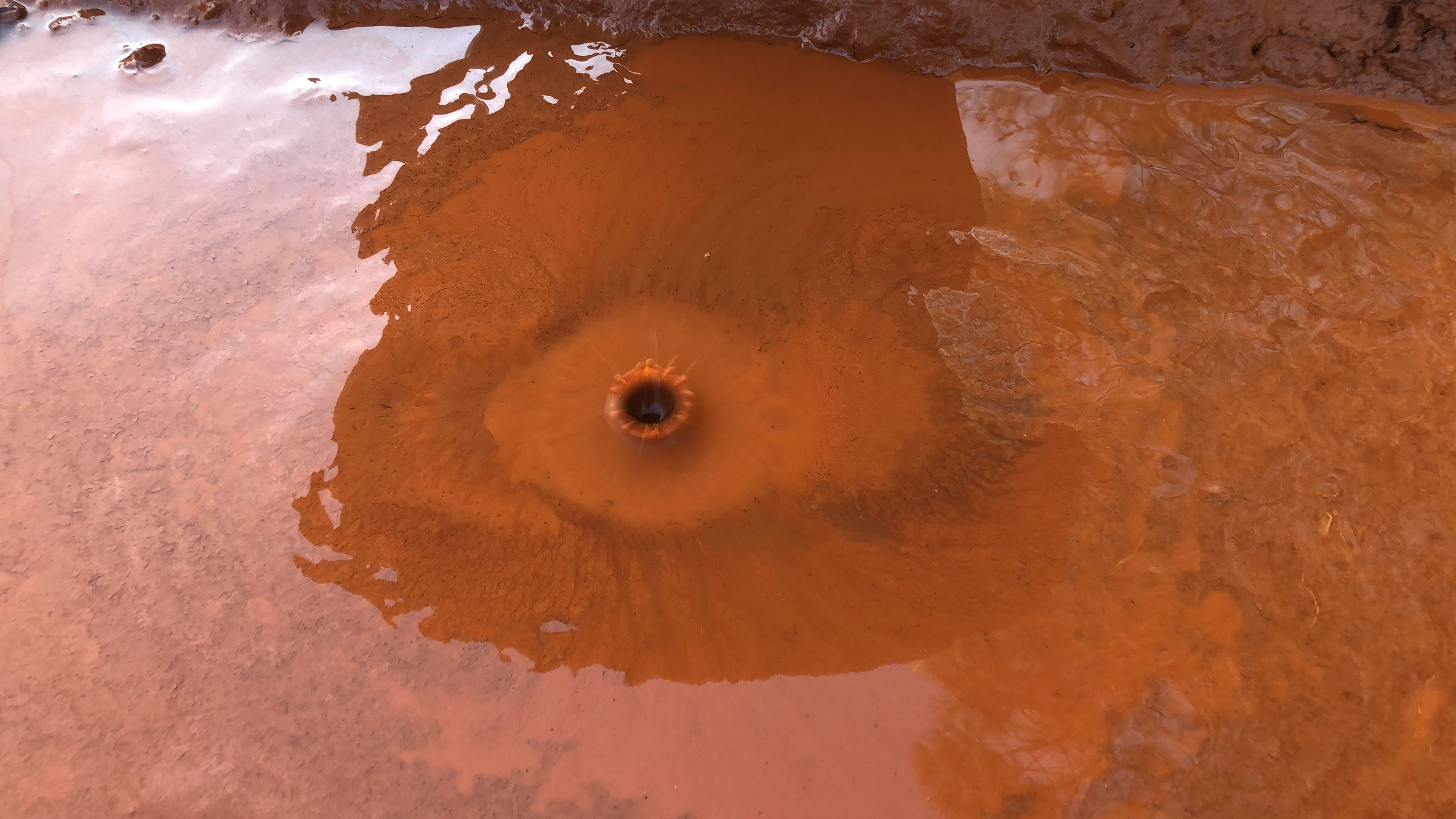 |
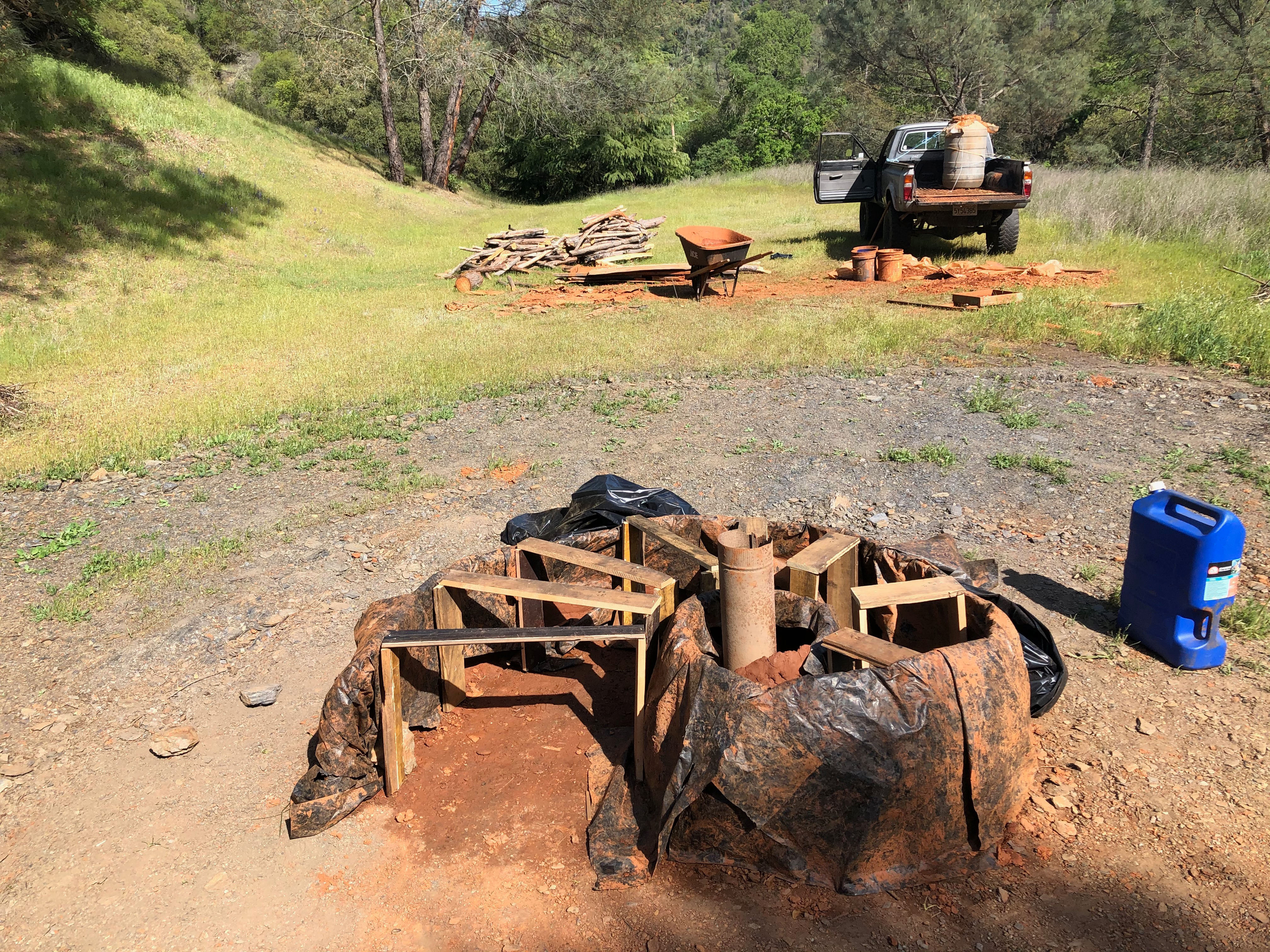 After building up the side walls of the kiln, I had to improvise arch supports. This particular clay had a decent plasticity but was highly grogged and so couldn't mantain as unsupported arch of this size. |
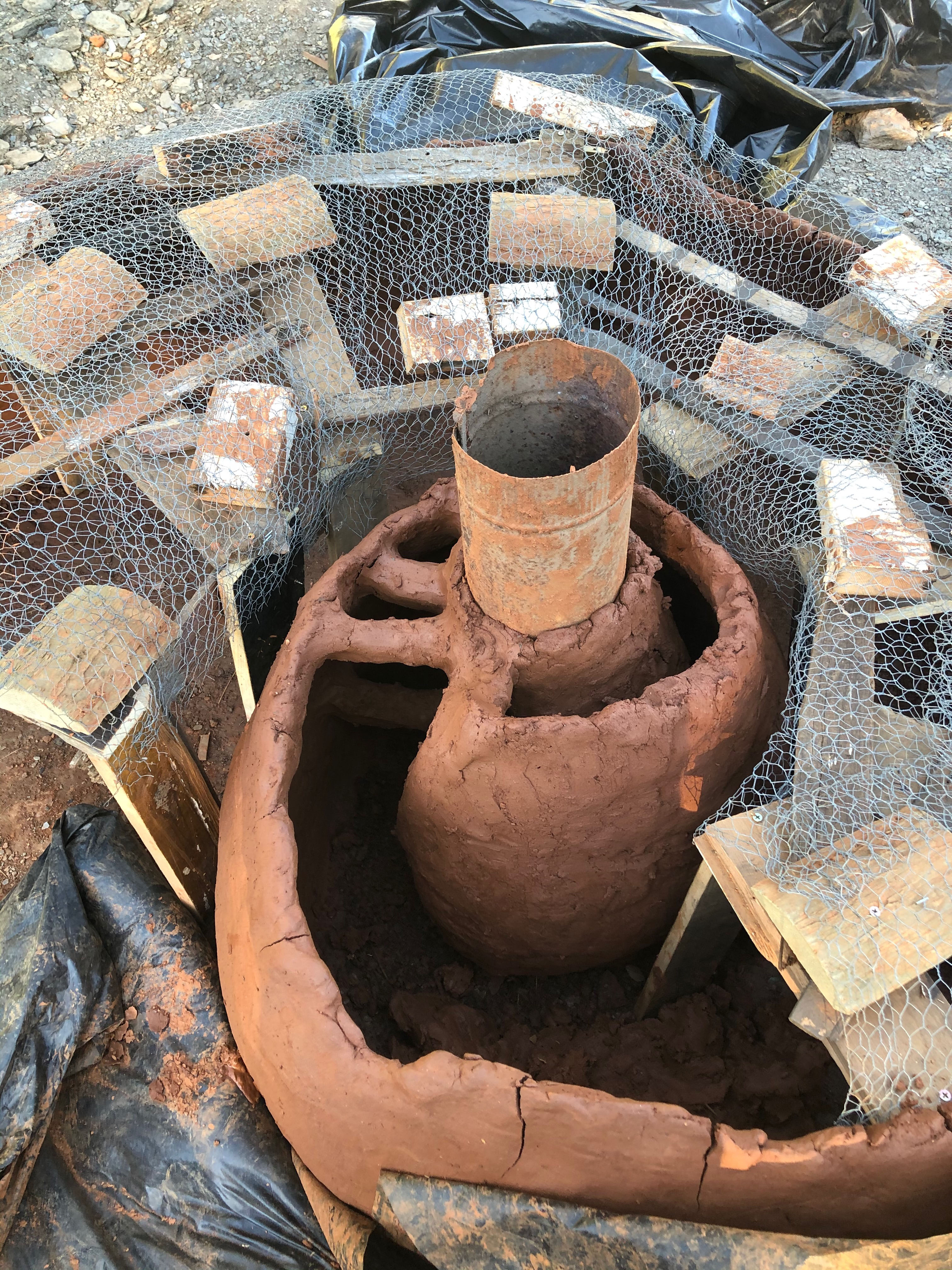 |
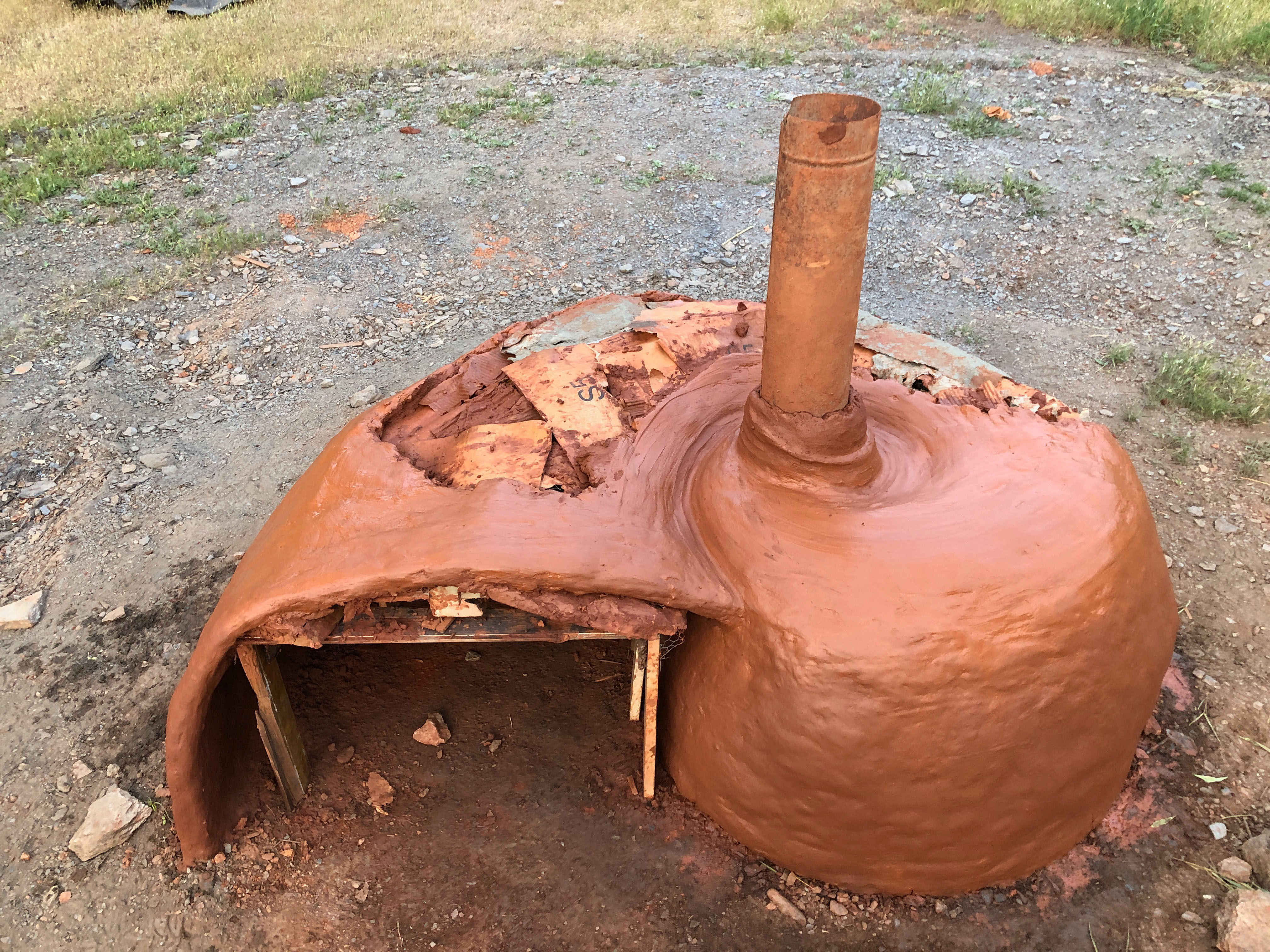 |
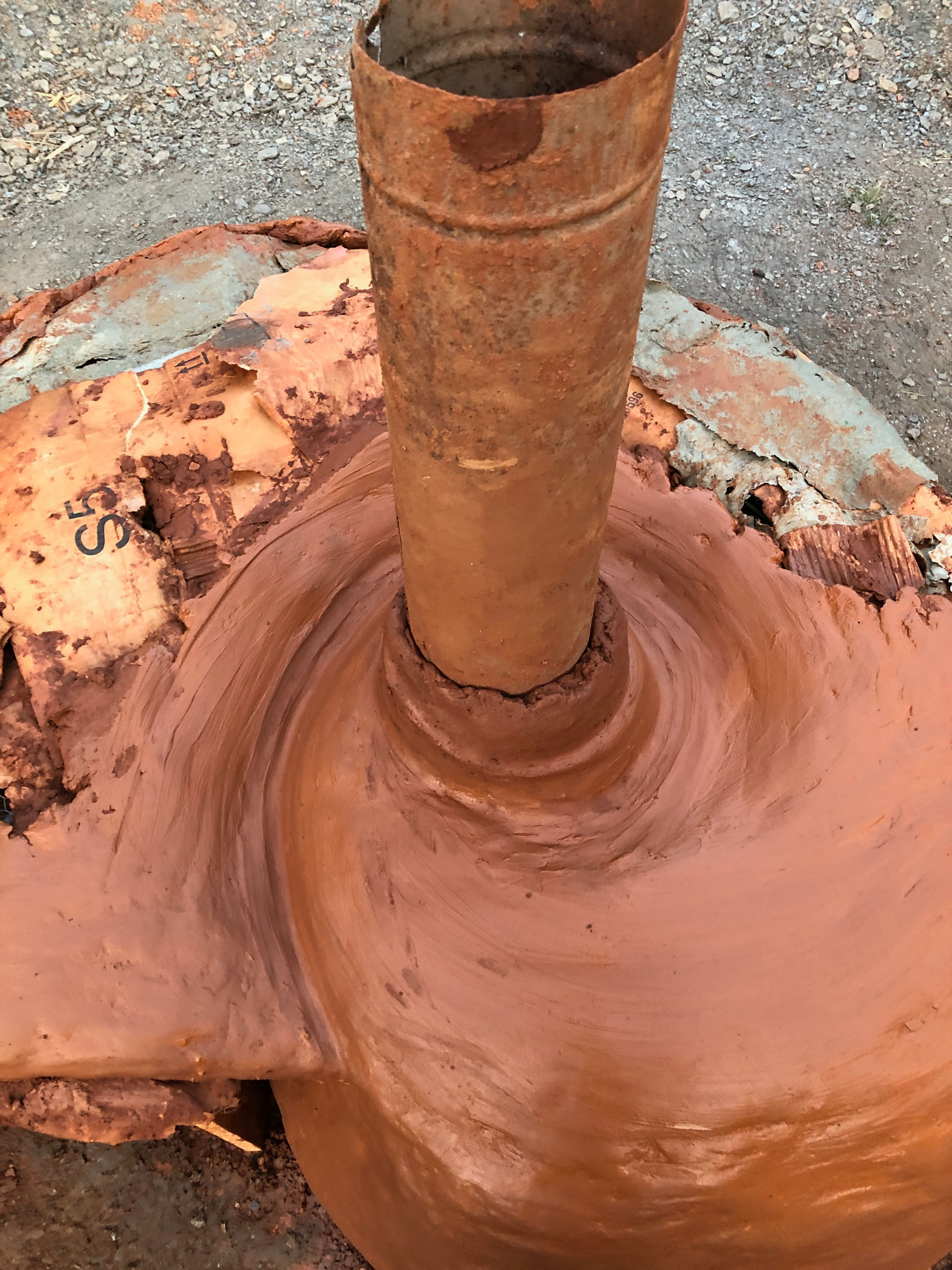 |
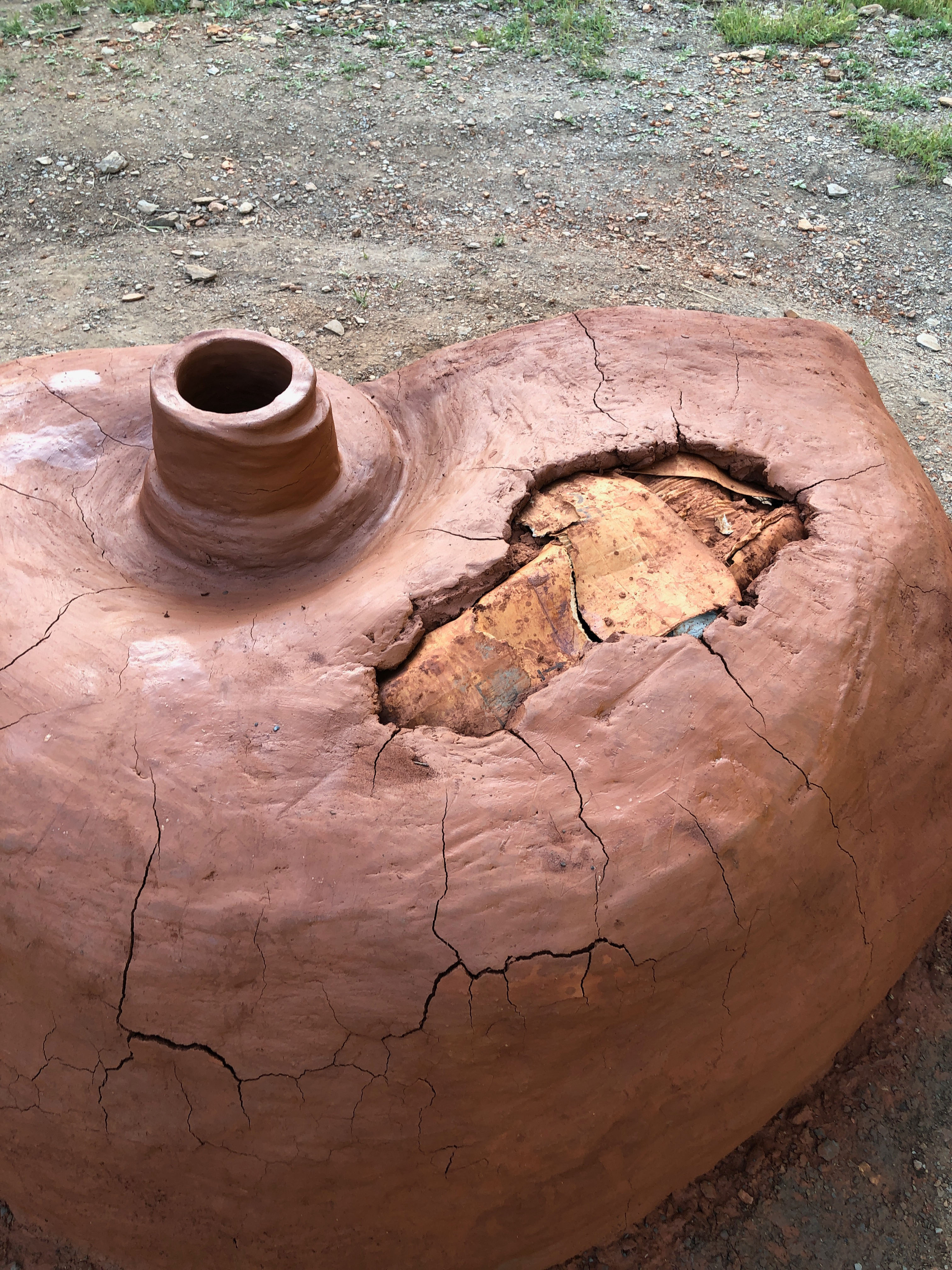 |
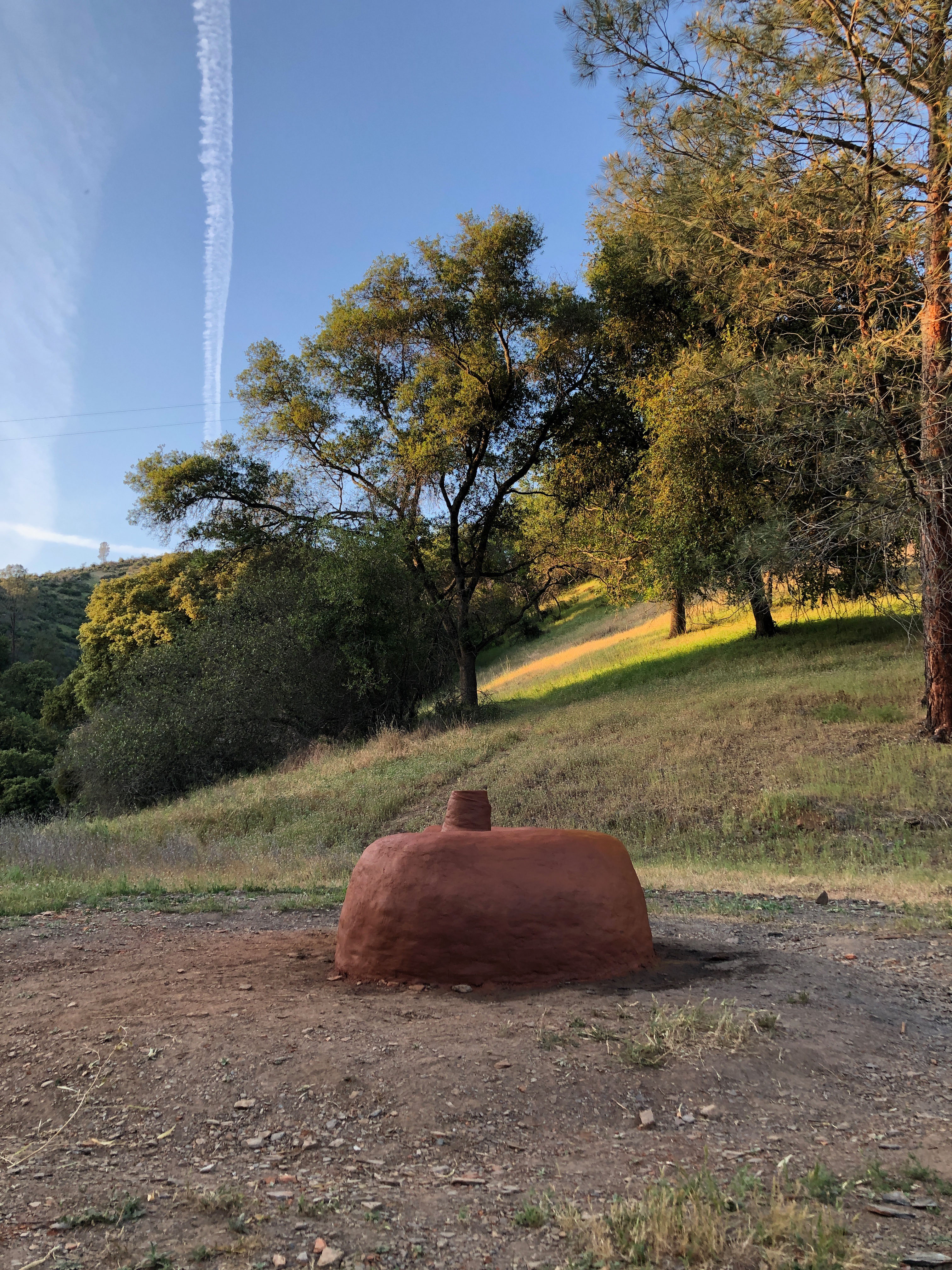 |
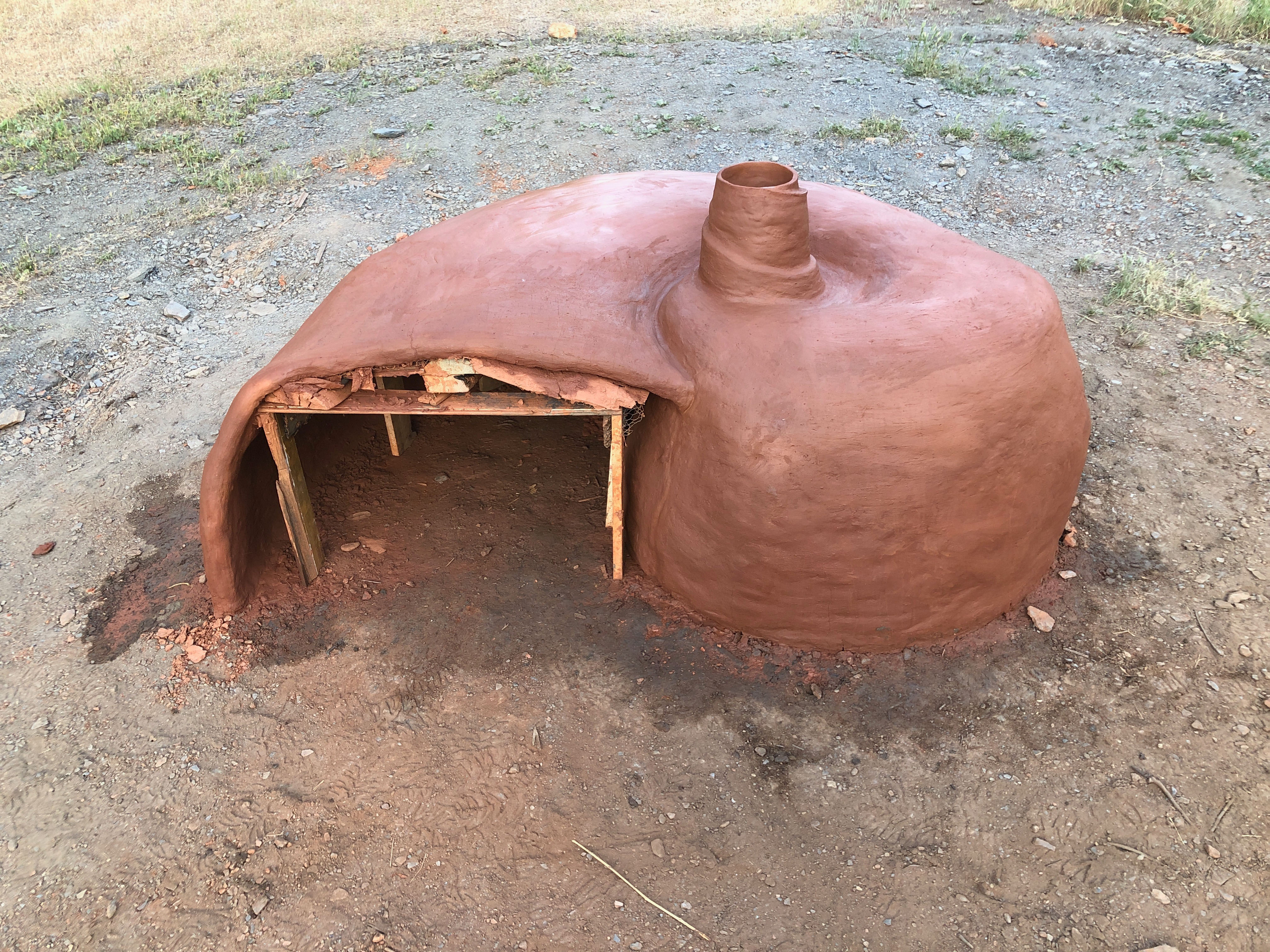 |
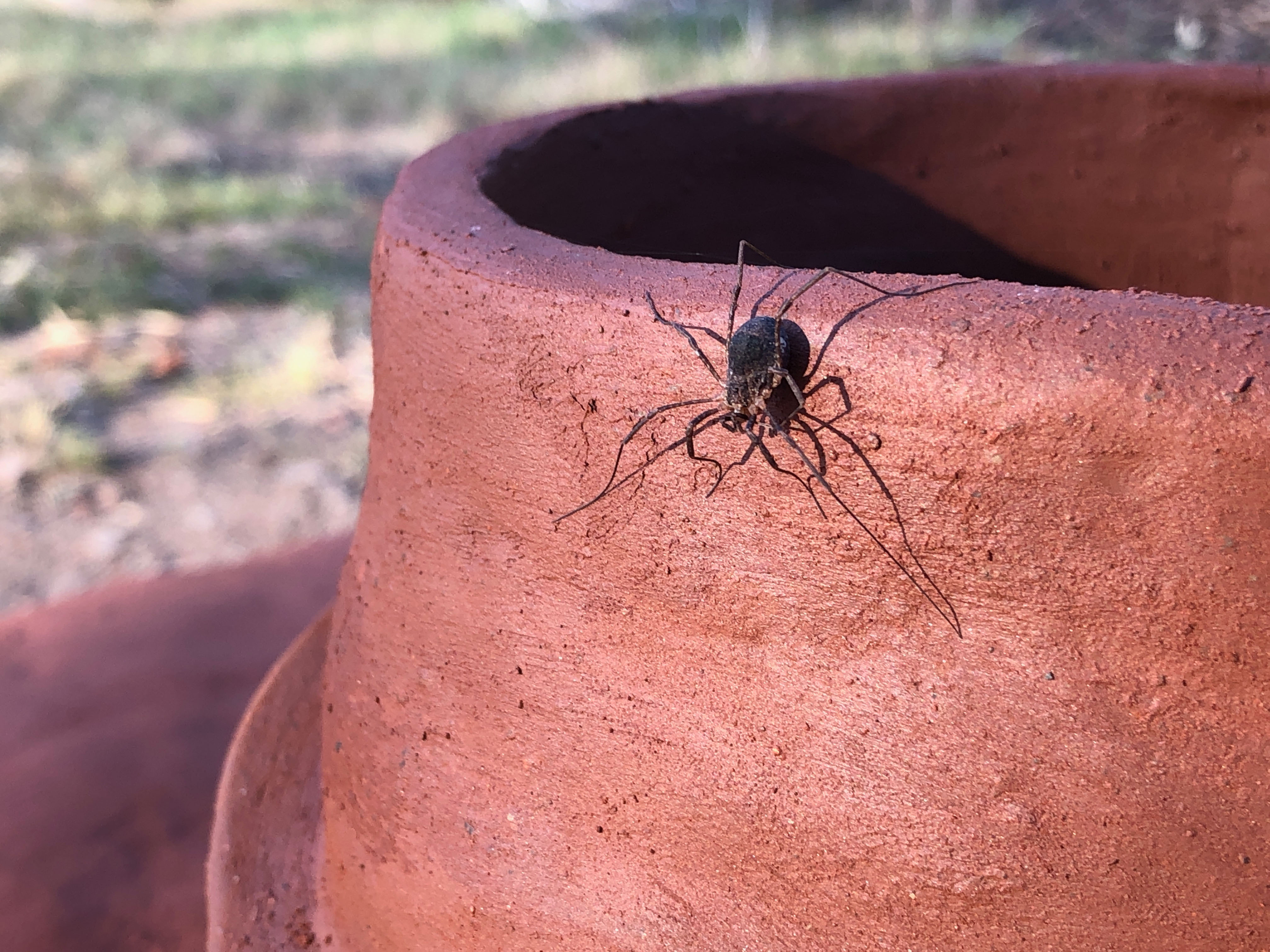 |
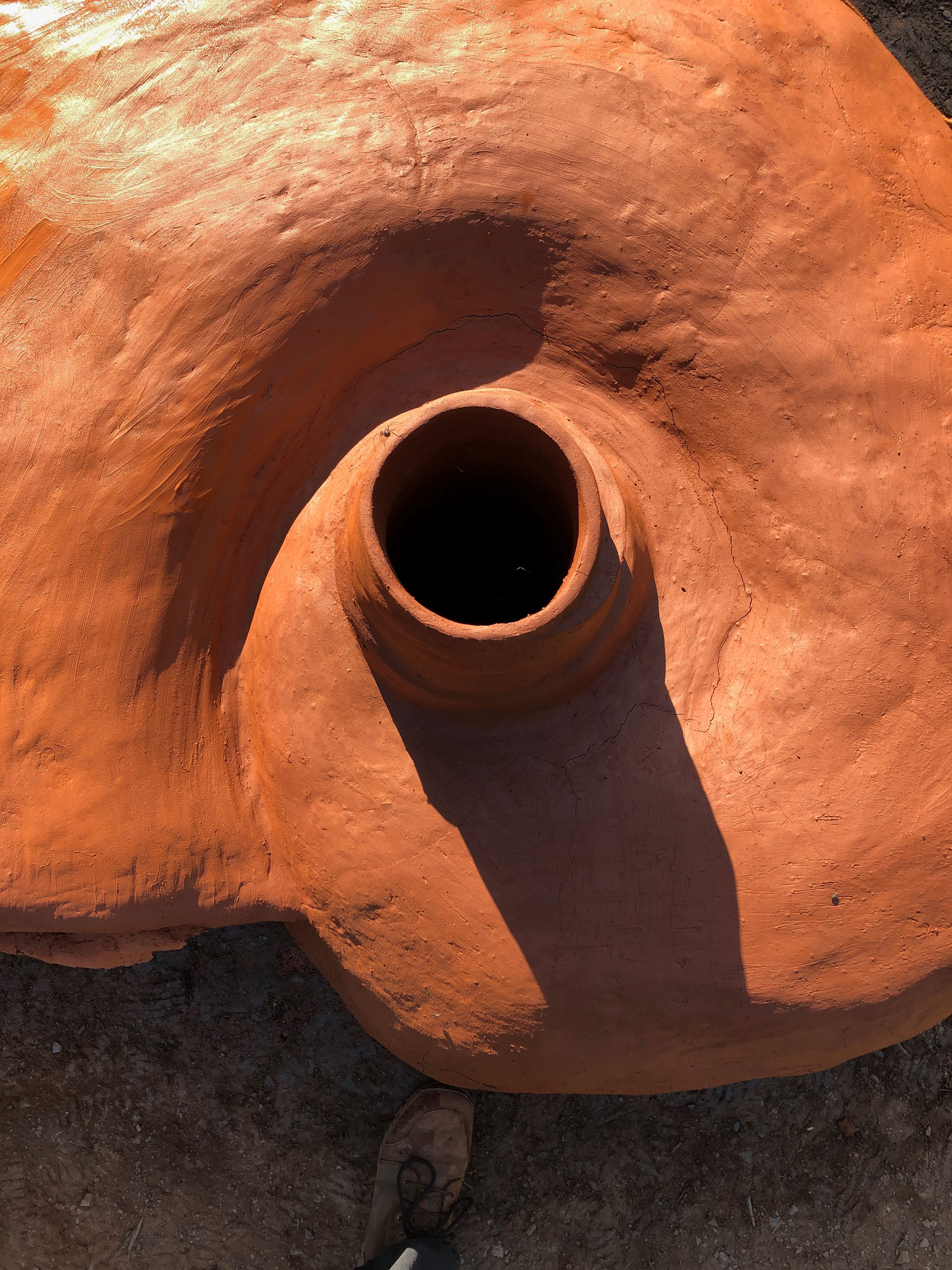 |
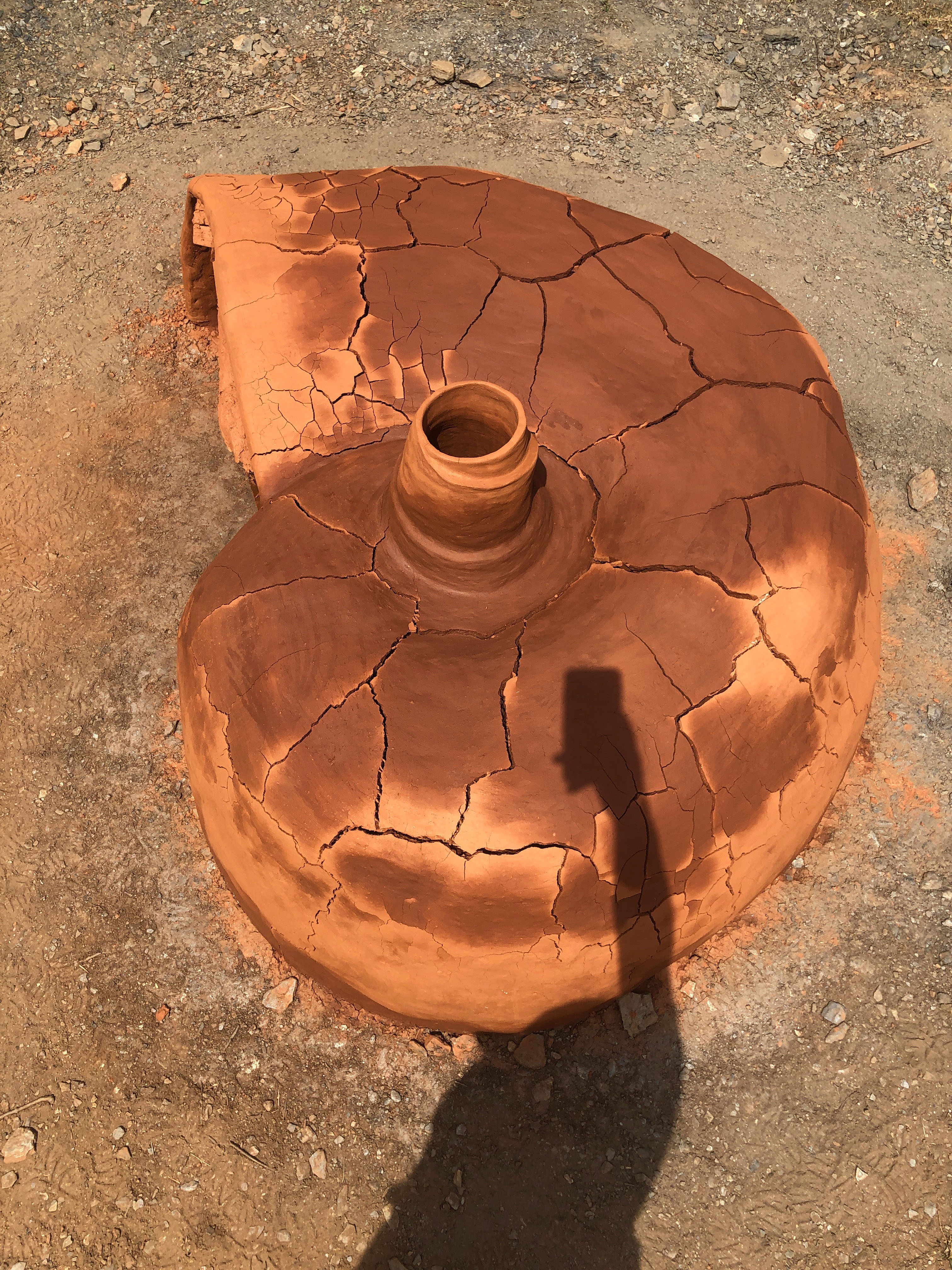 |
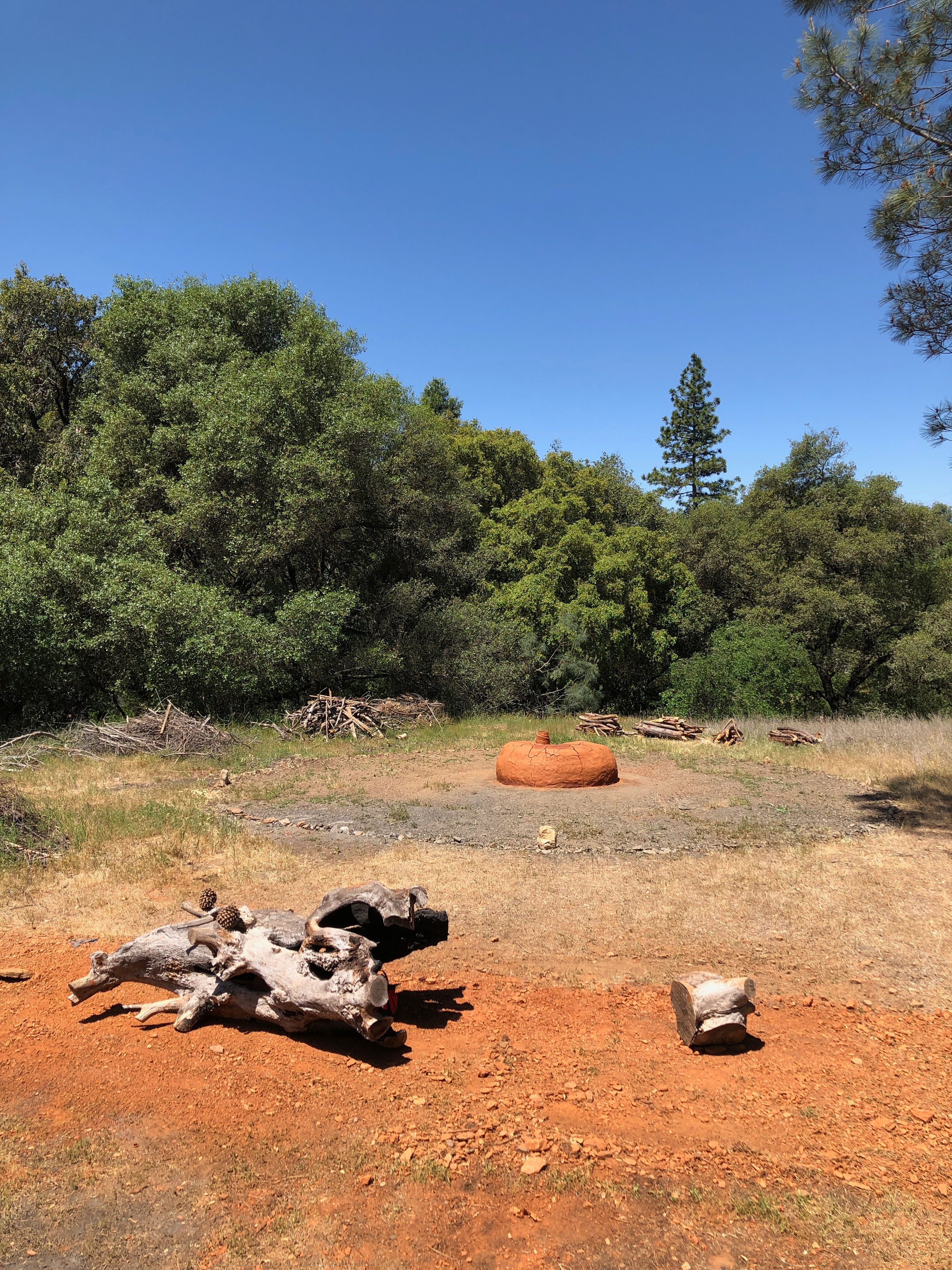 |
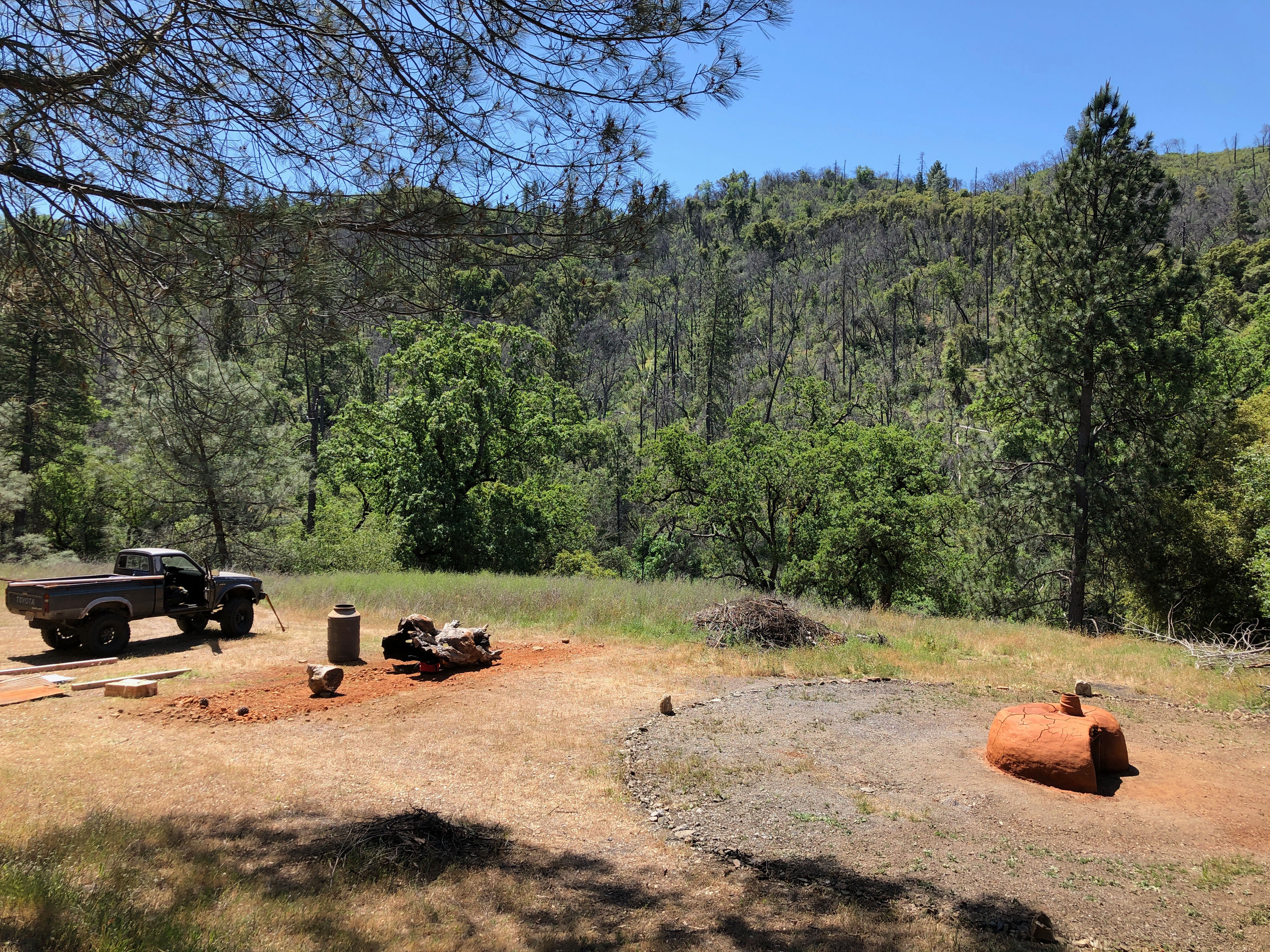 |
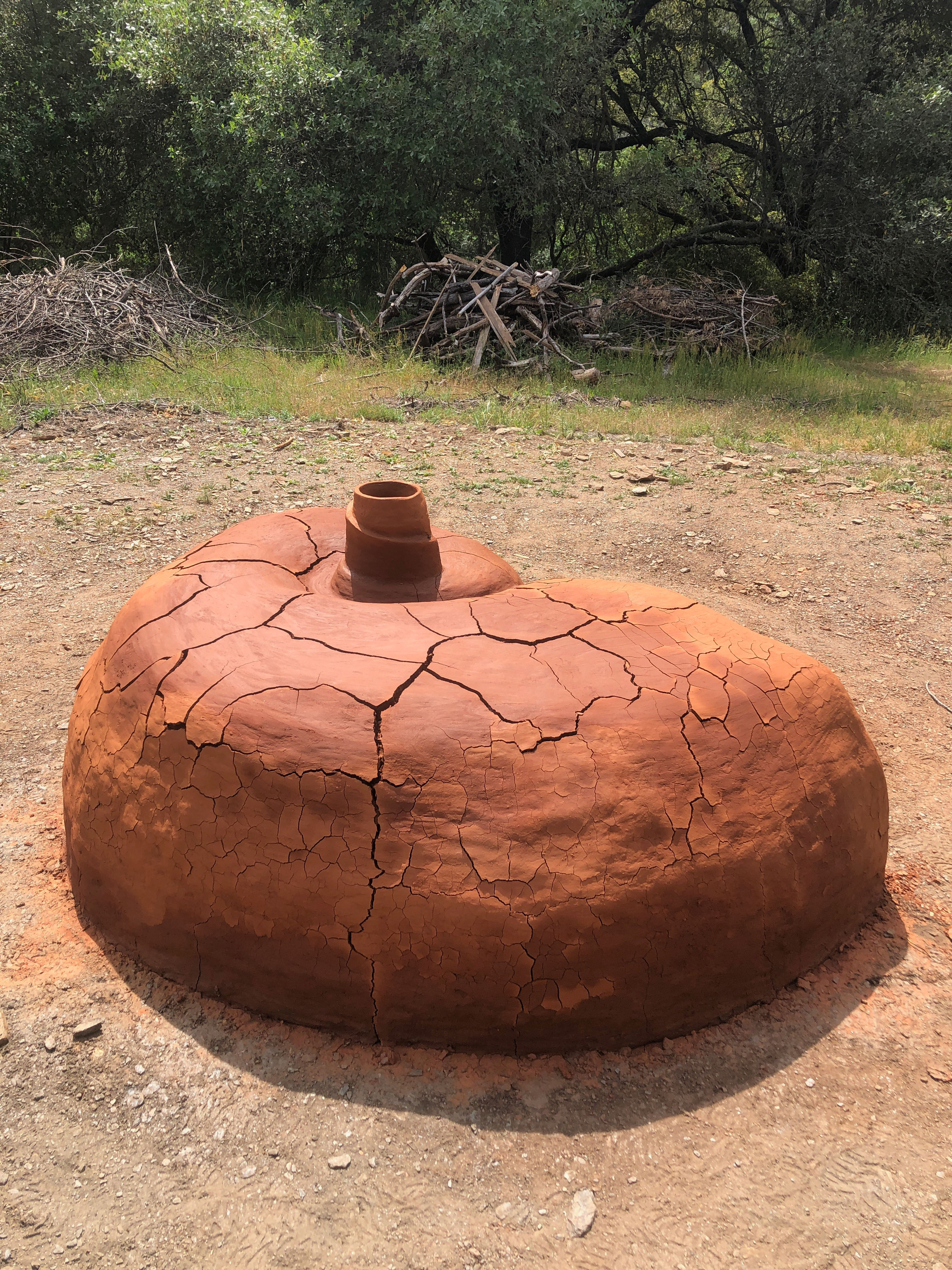 |
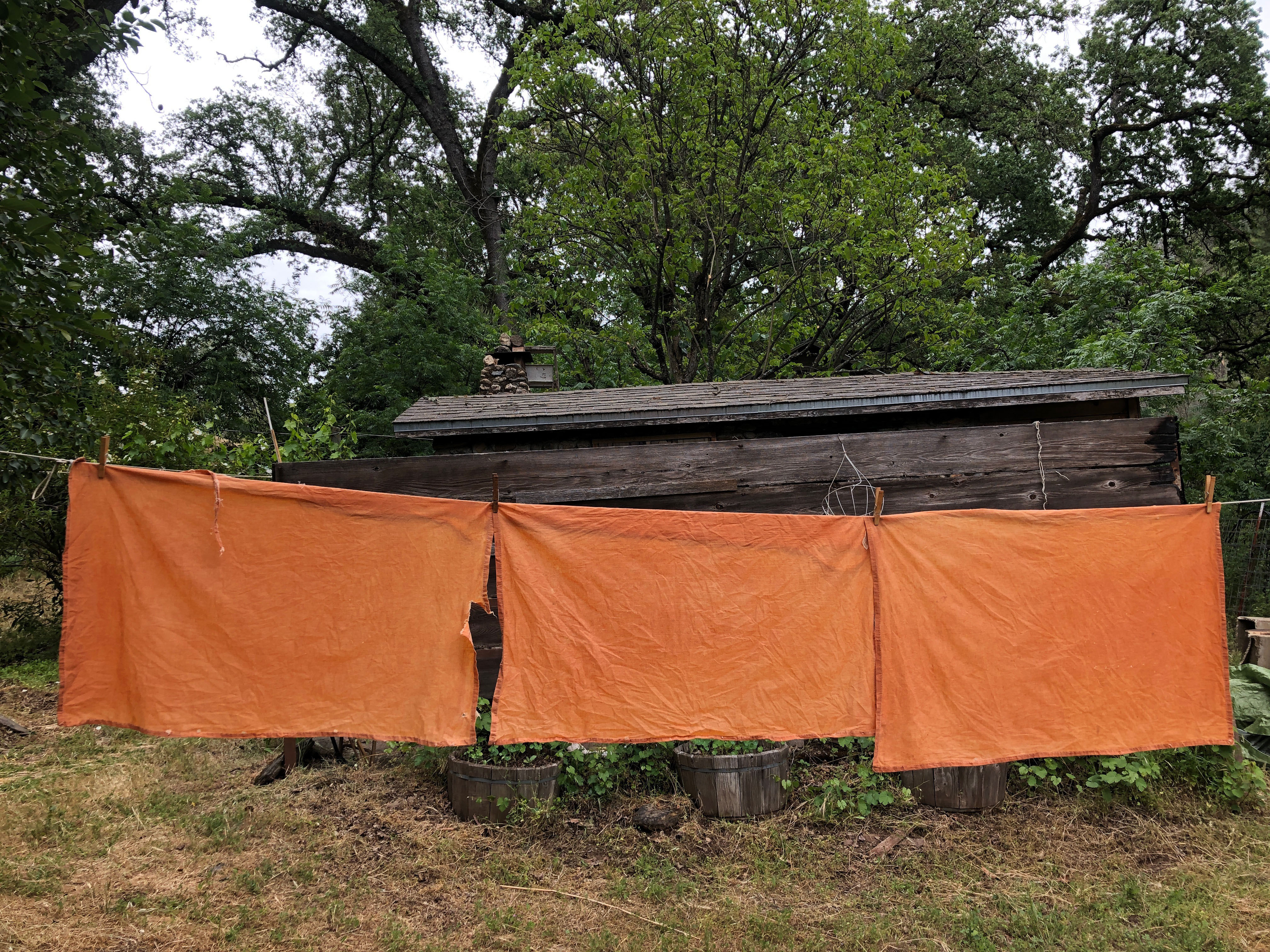 |
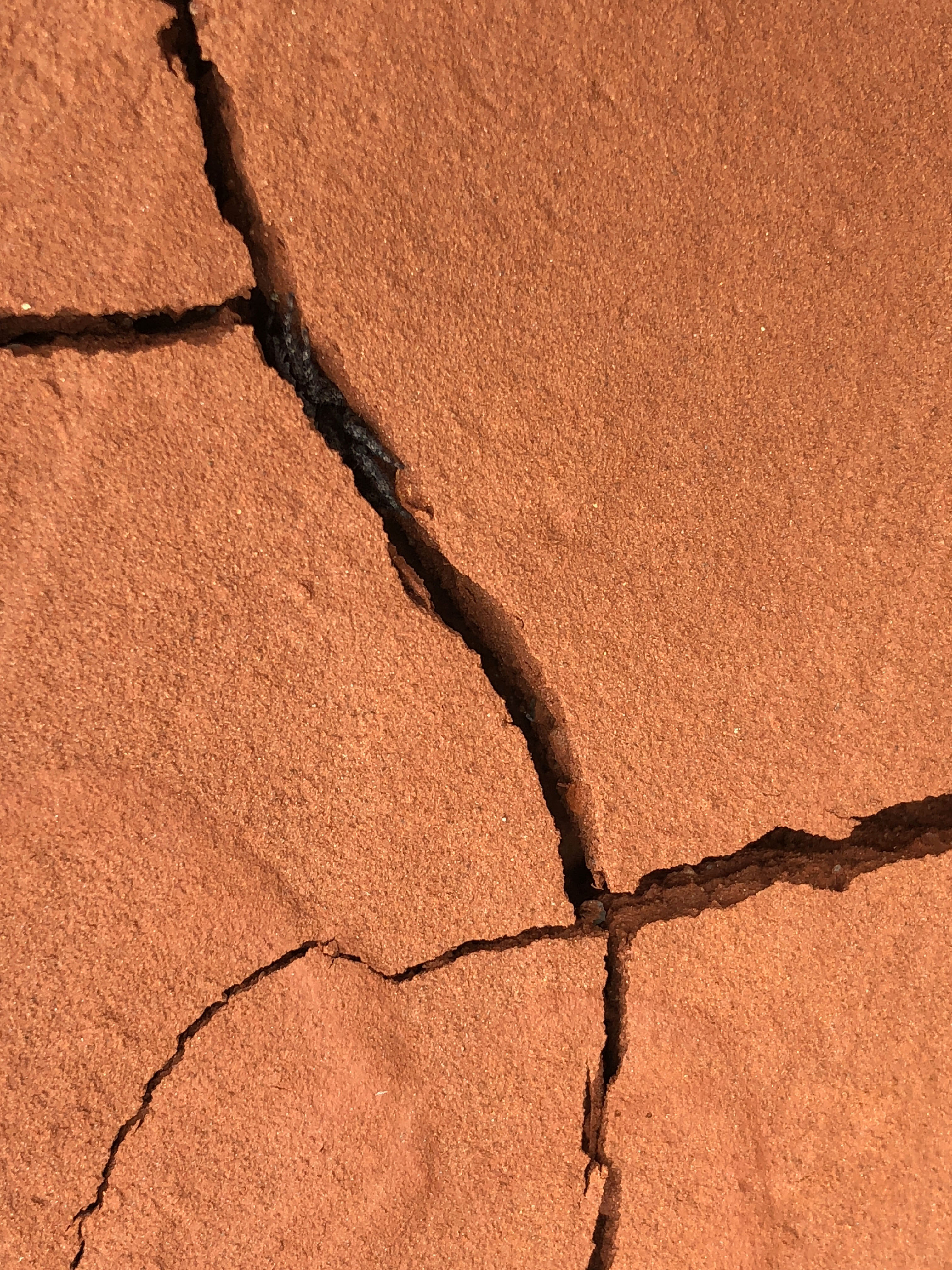 |
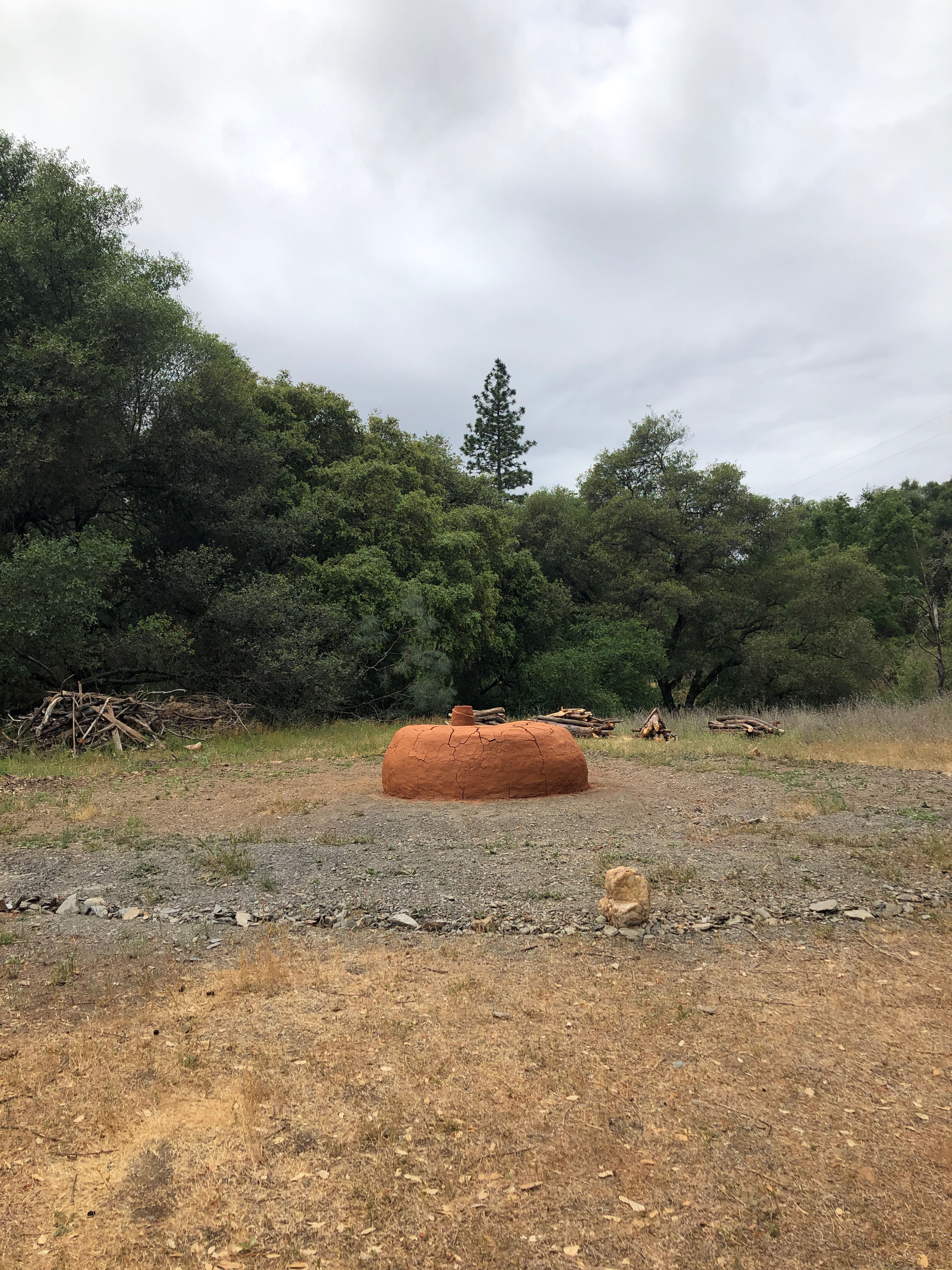 |
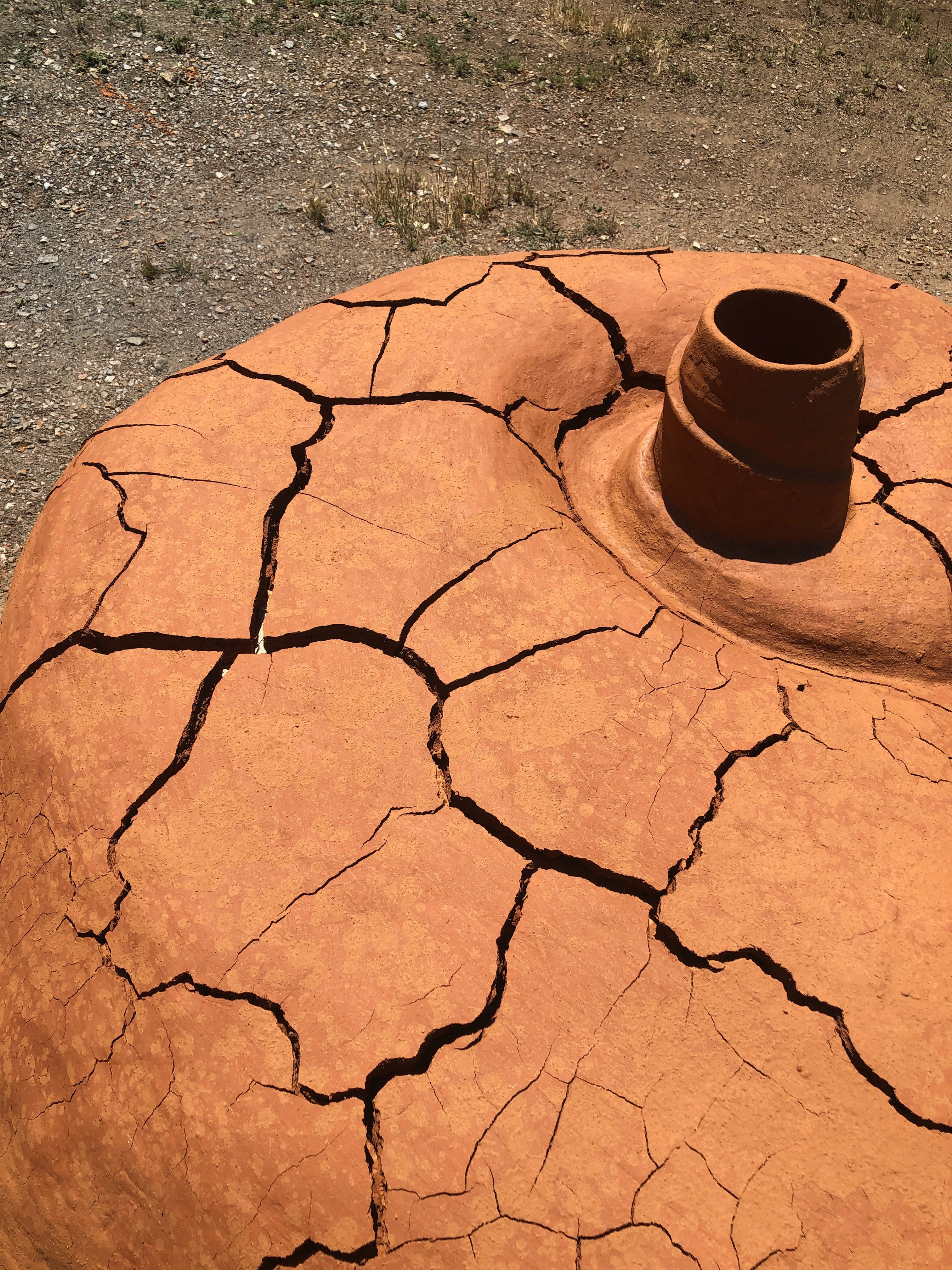 |
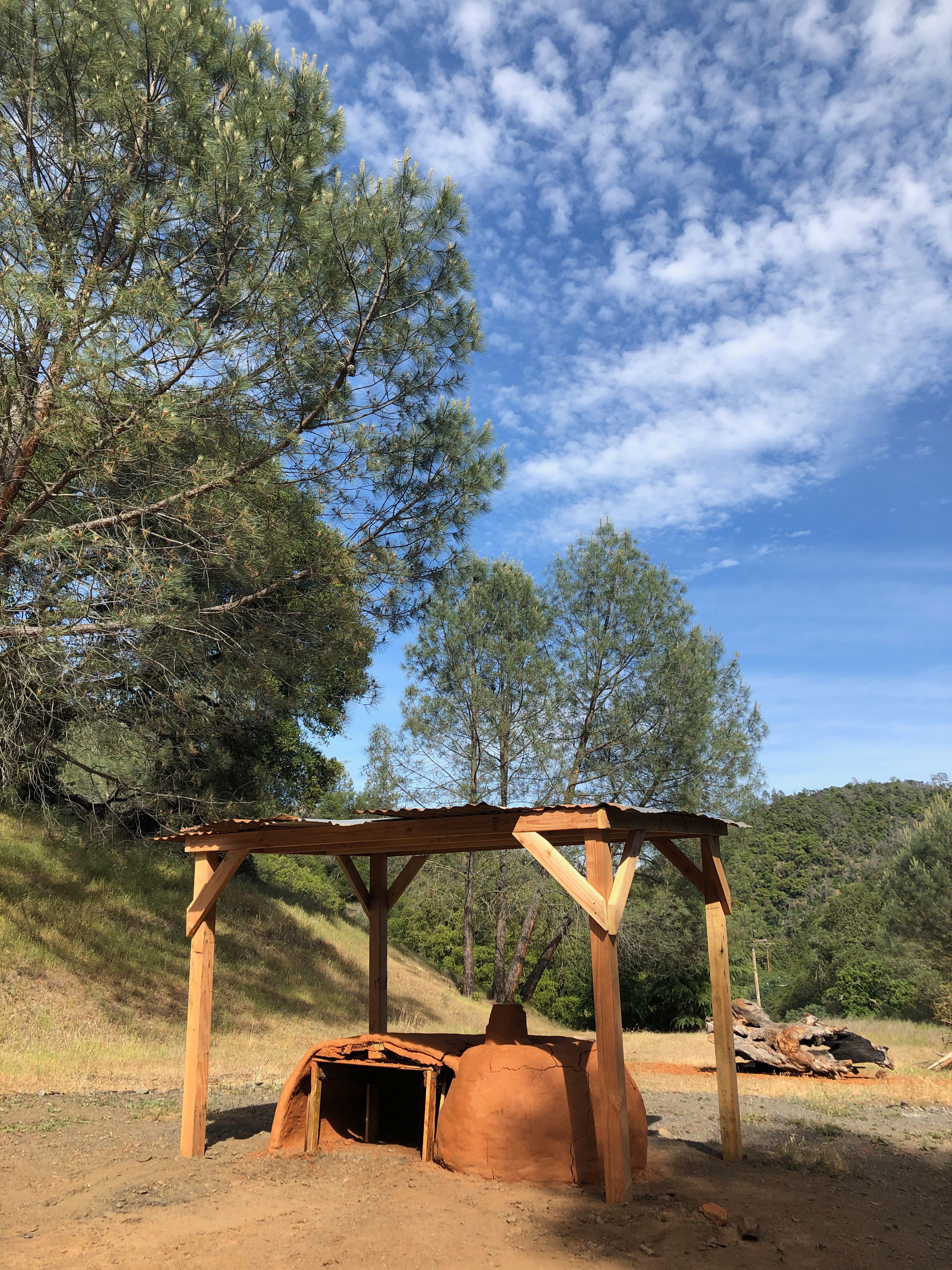 |
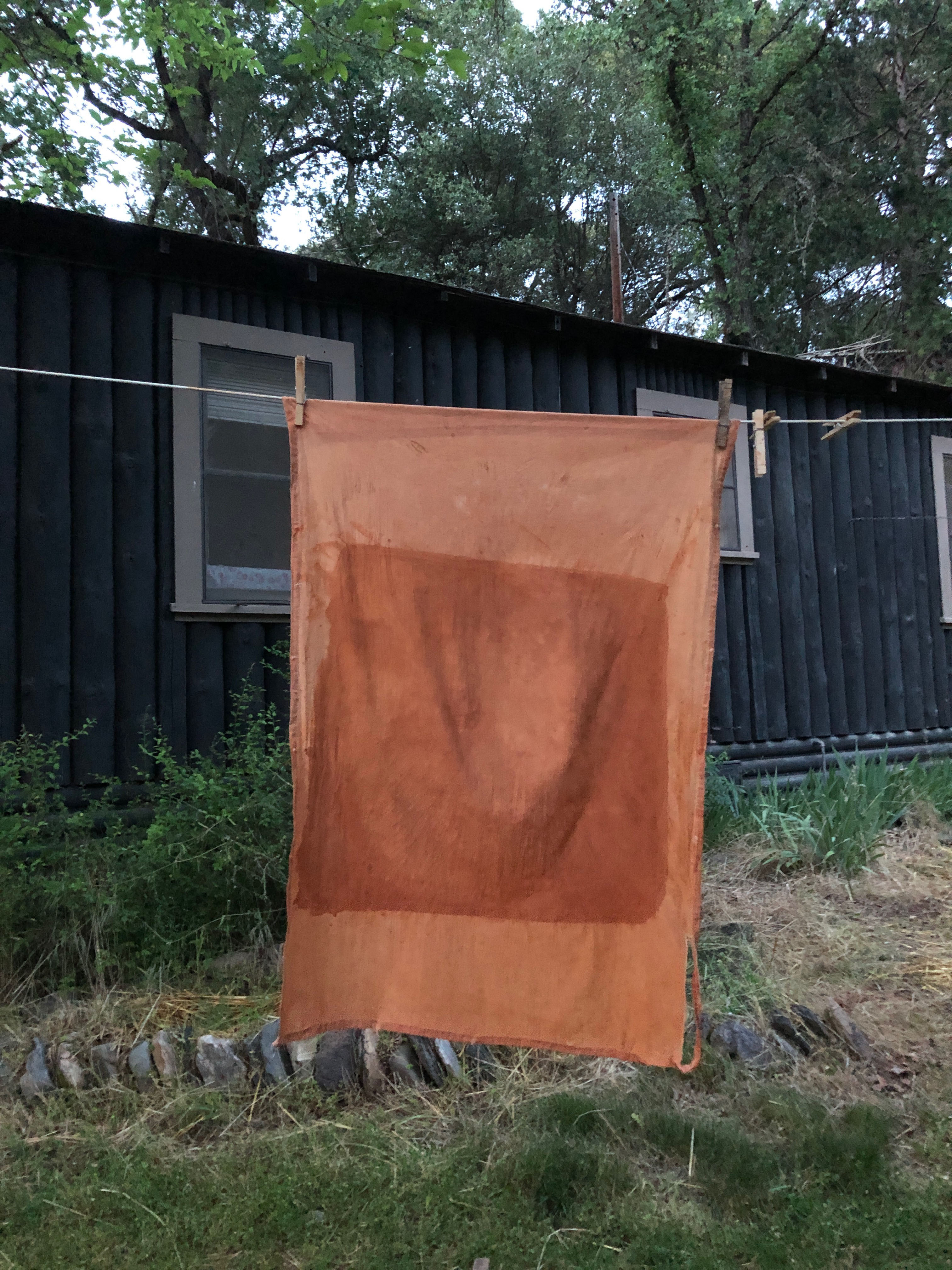 |
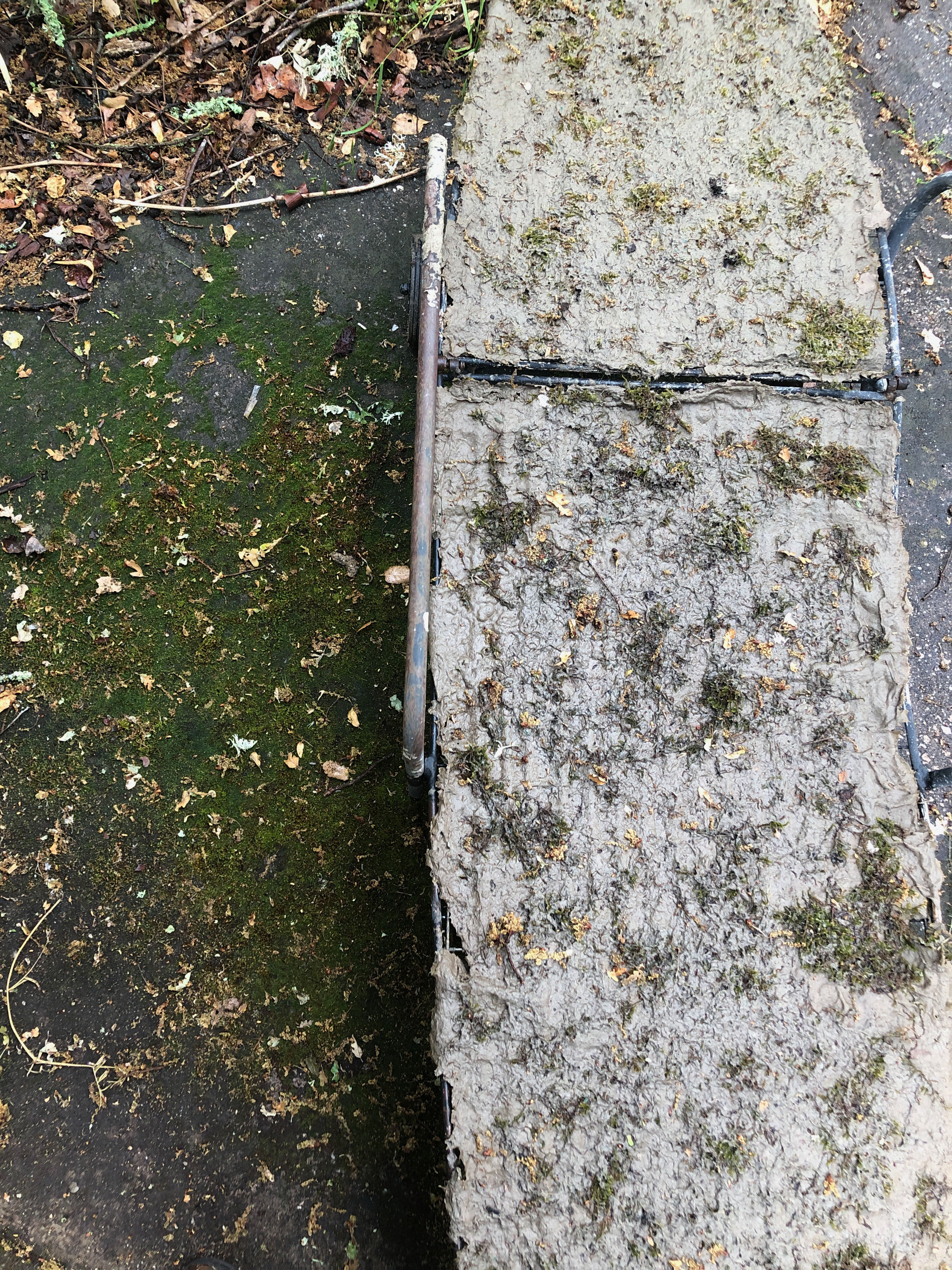 |
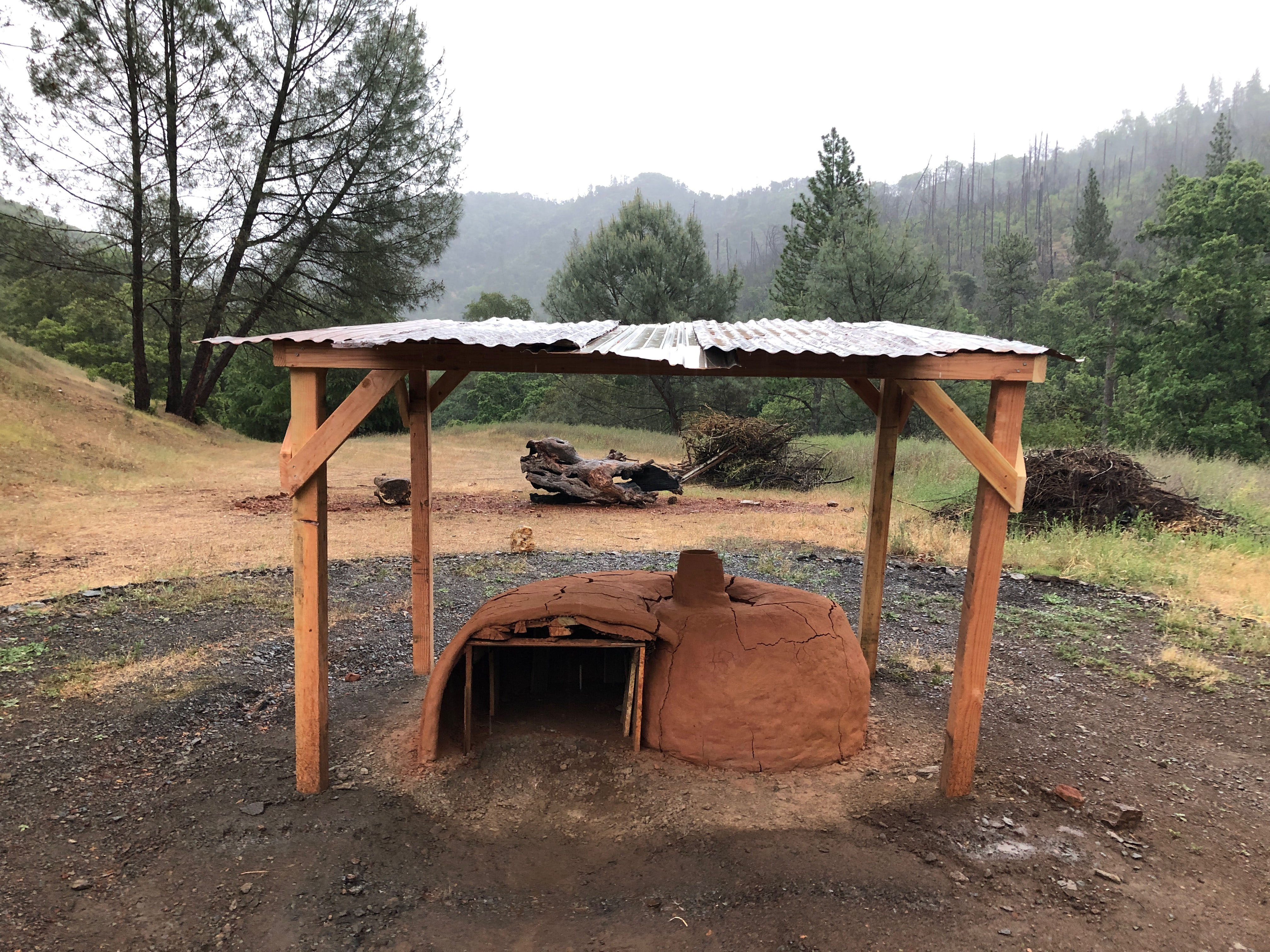 |
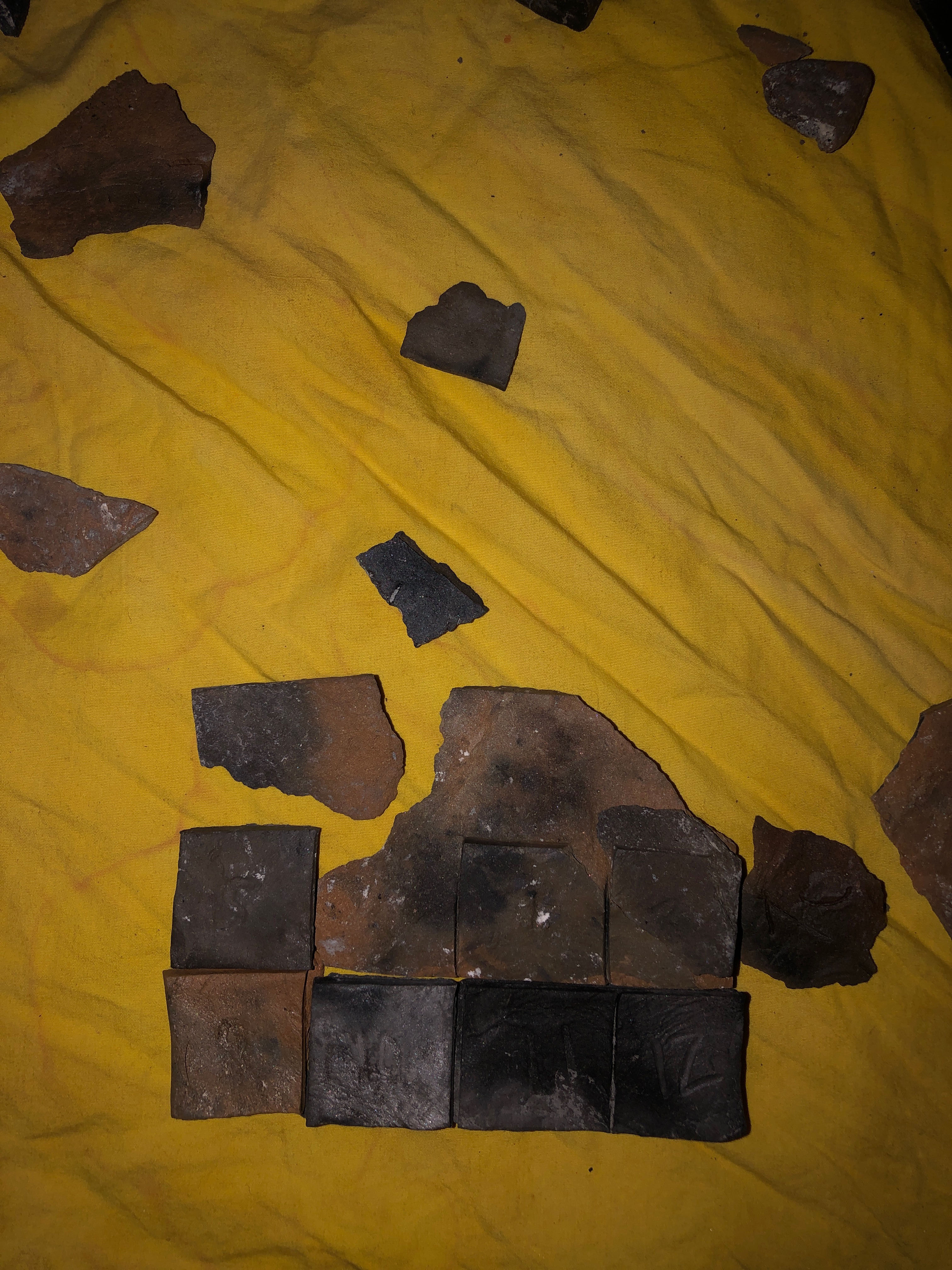 |
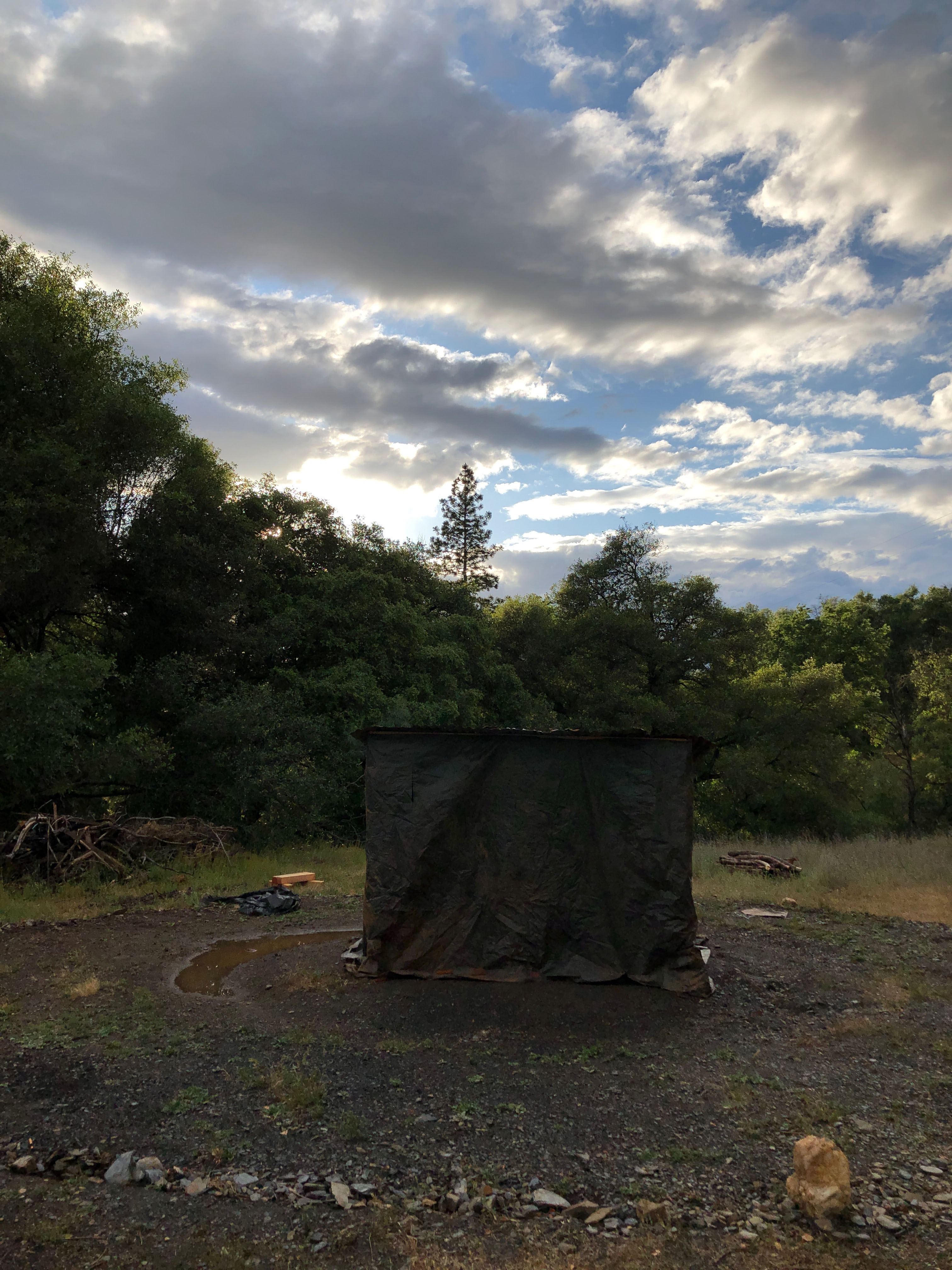 |
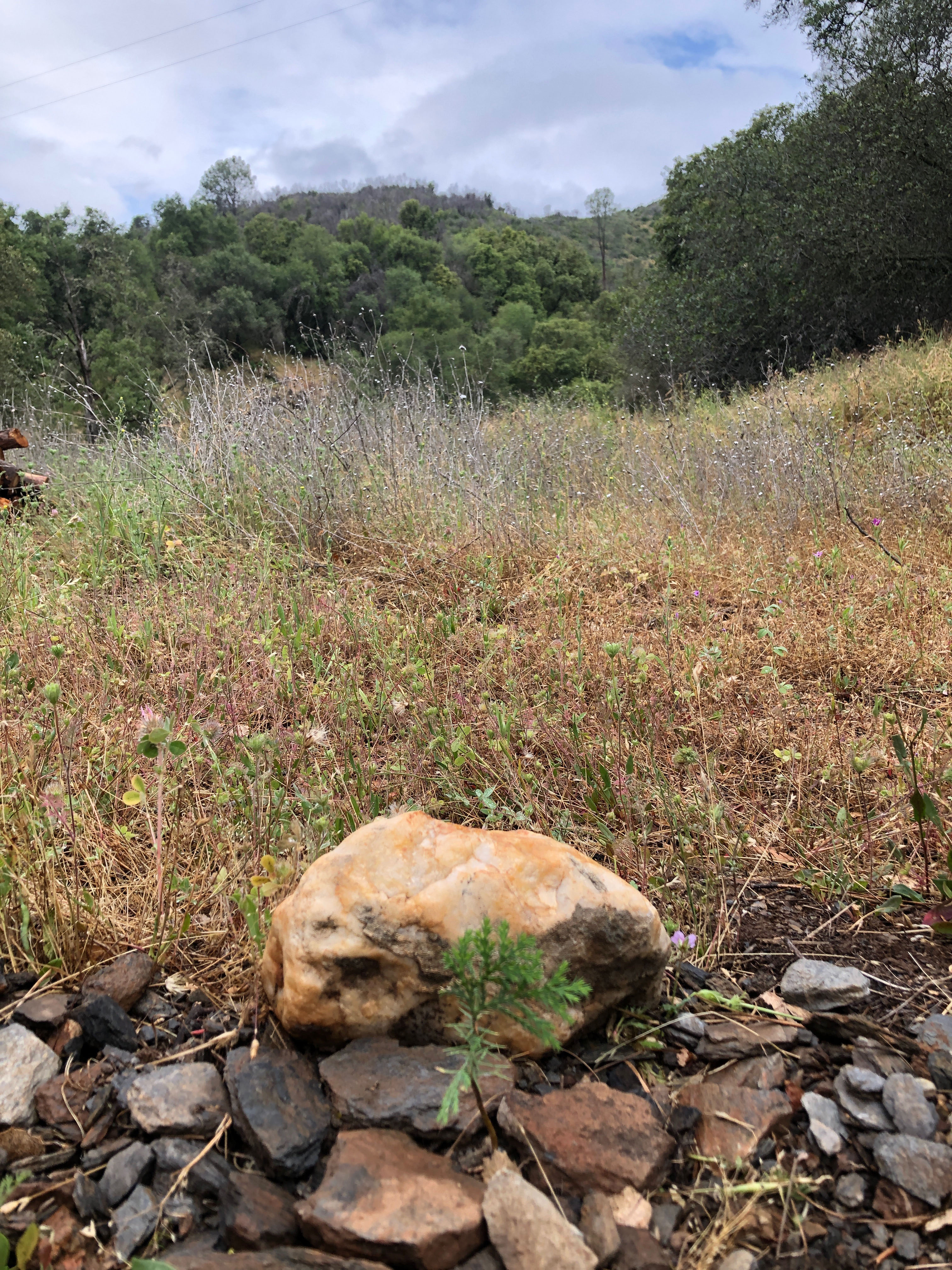 |
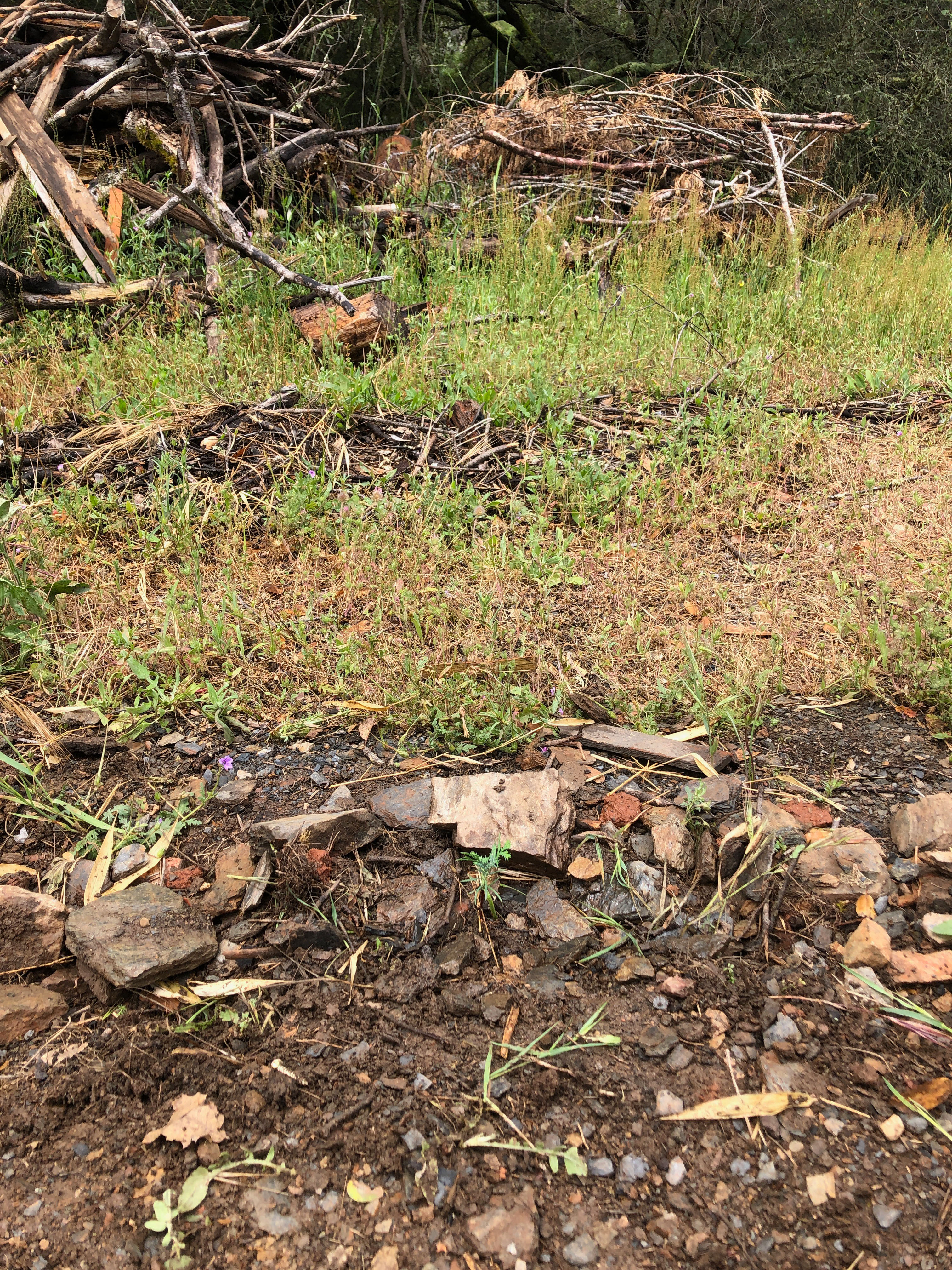 |
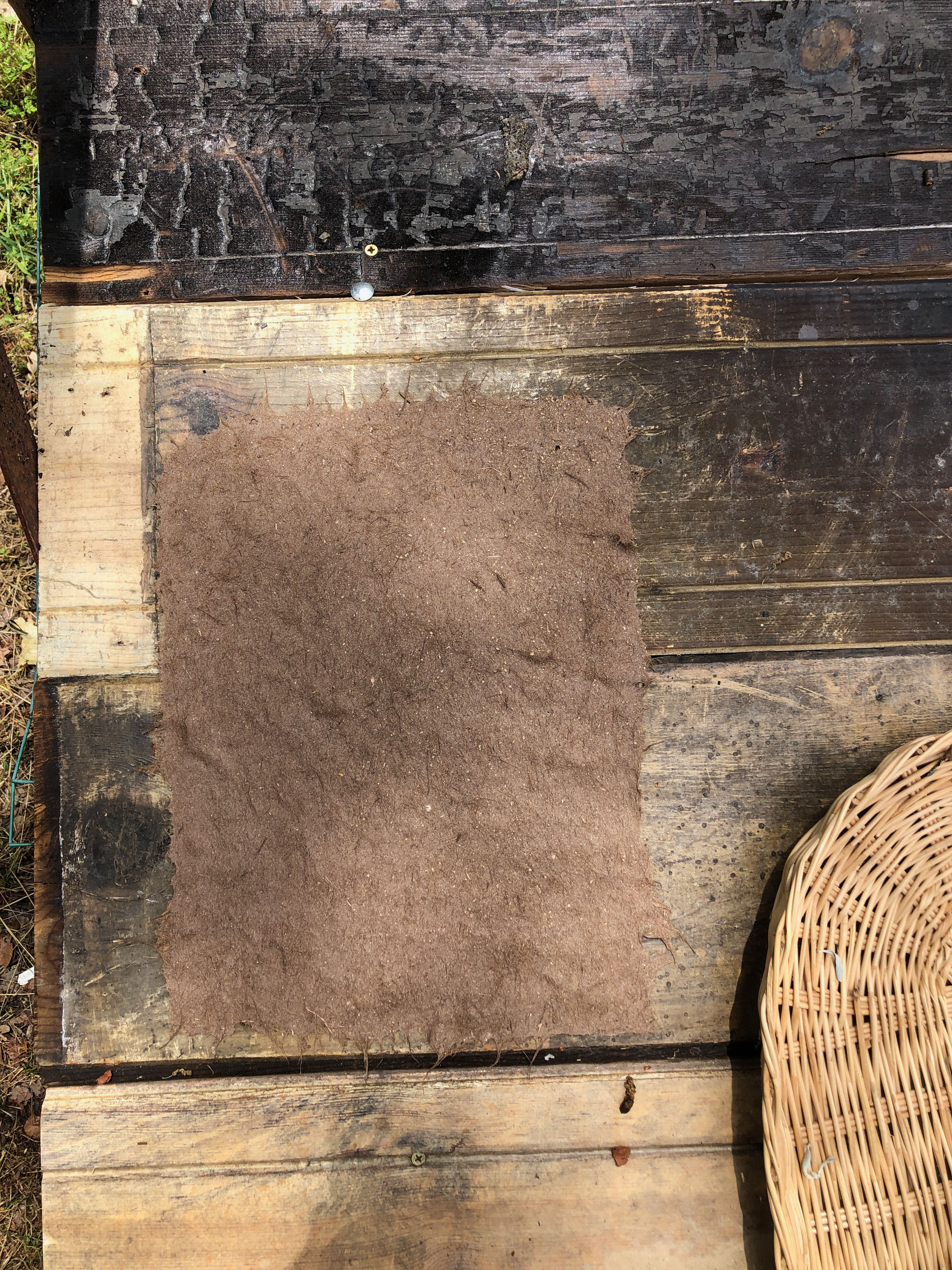 |
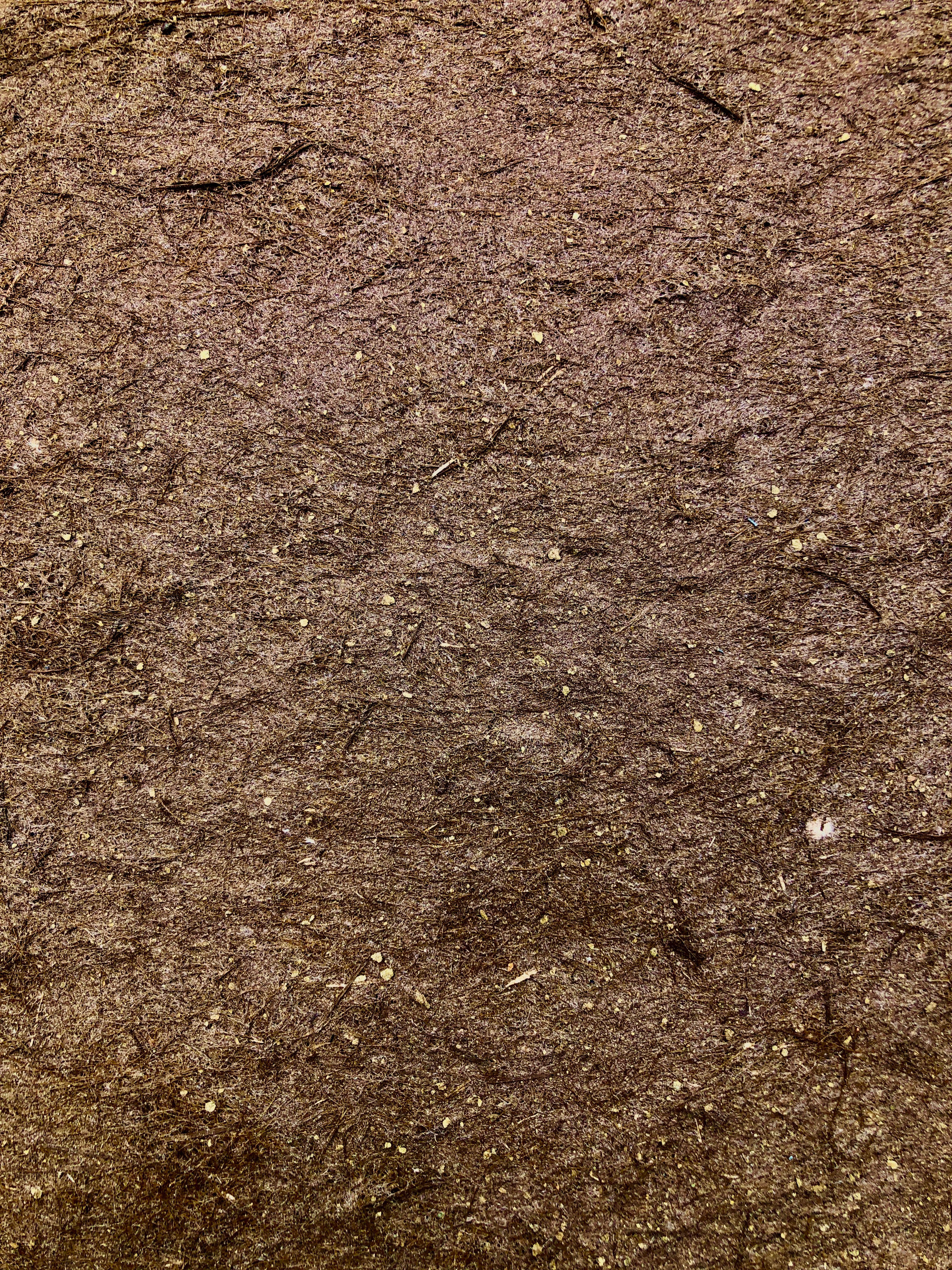 |
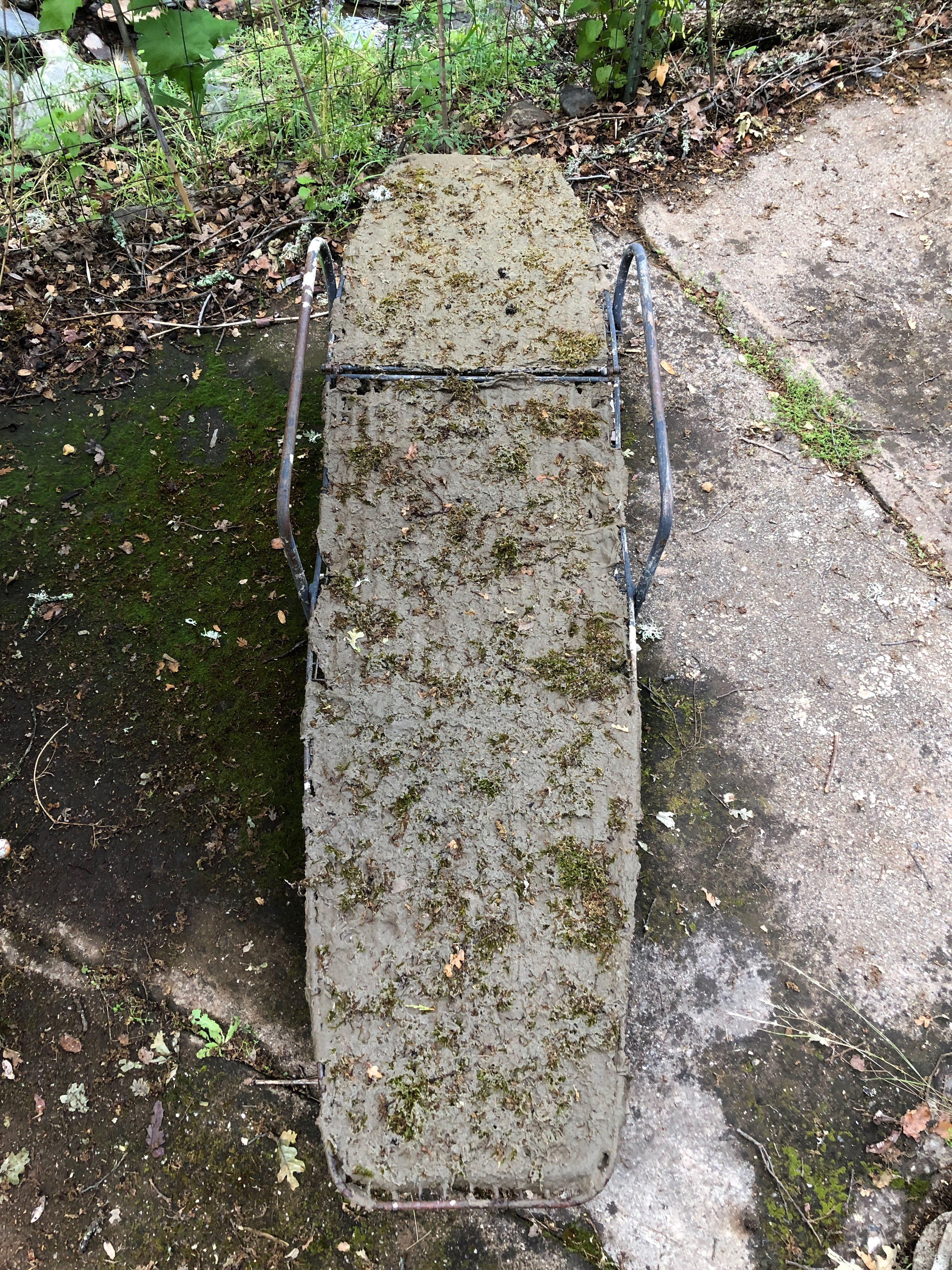 |
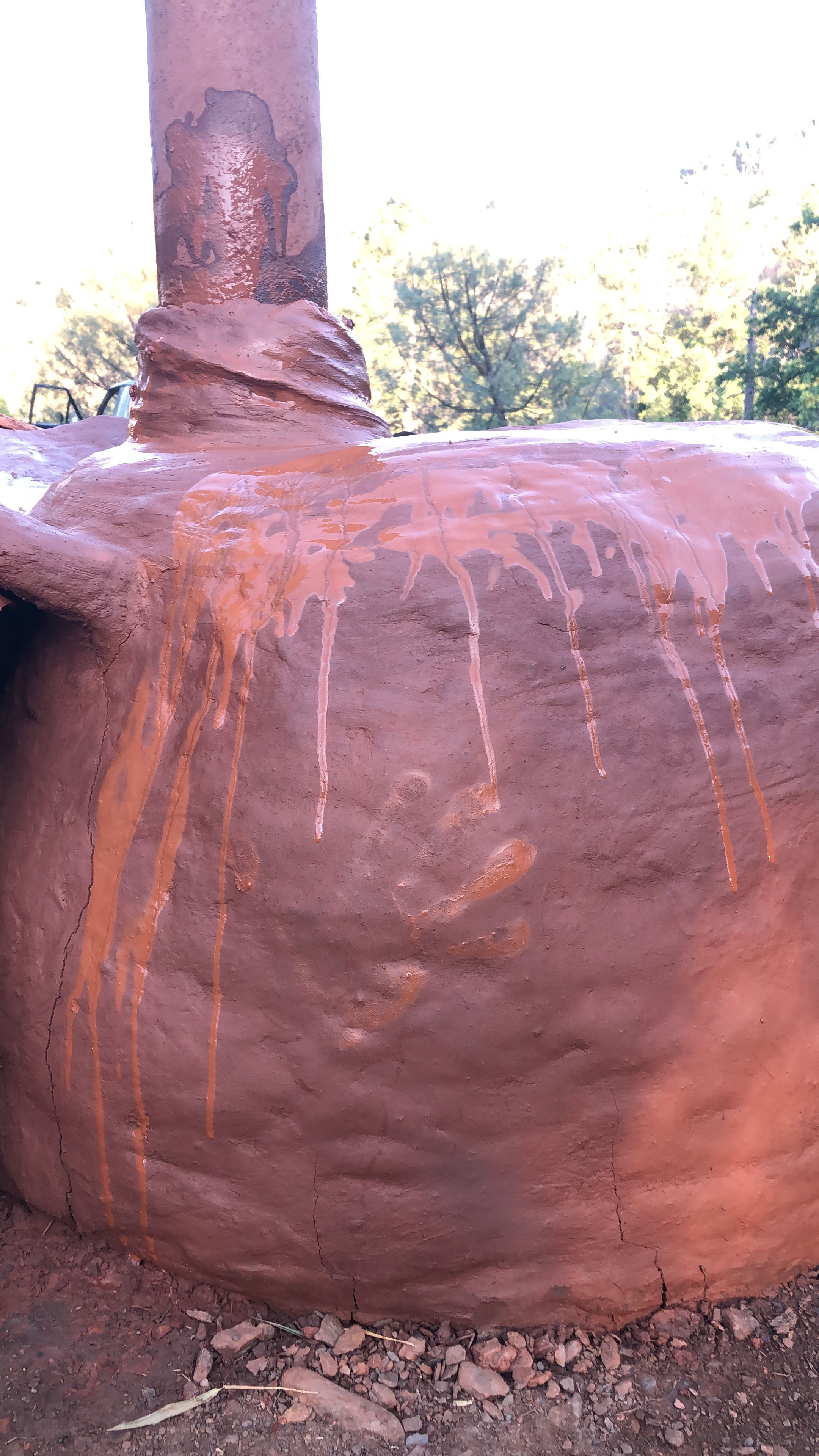 |
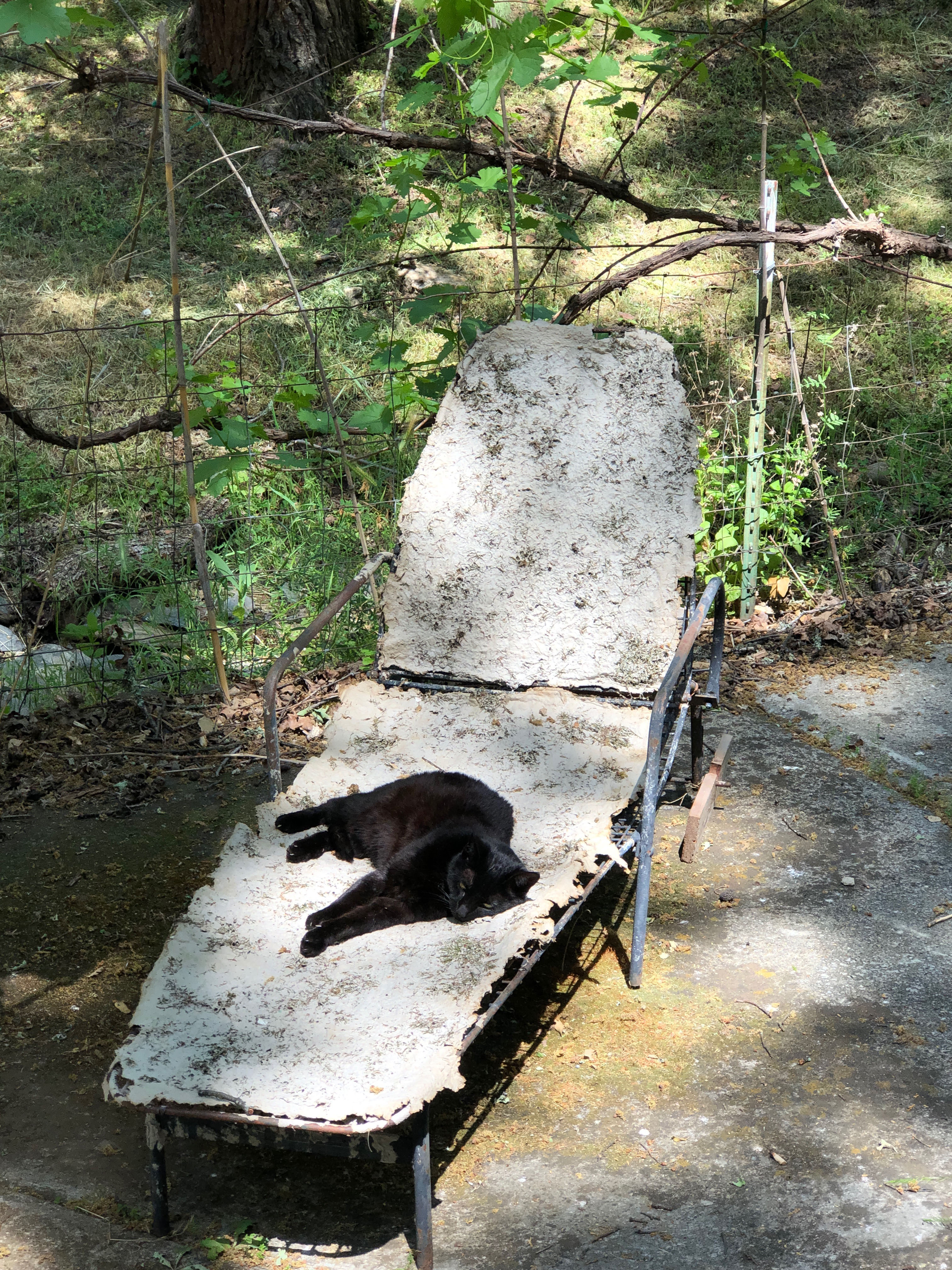 |
After taking apart the clay drying racks, the cotton flour sacks were washed and dried. I was struck by the framing, the image that was created by their repeated use, they were exposures to the clay minerals over the three months I had been here. They reminded me of Tony Conrad's "Yellow Movies", his paper exporsures that yellowed over the years and with that change became a movie, a container of time passed. 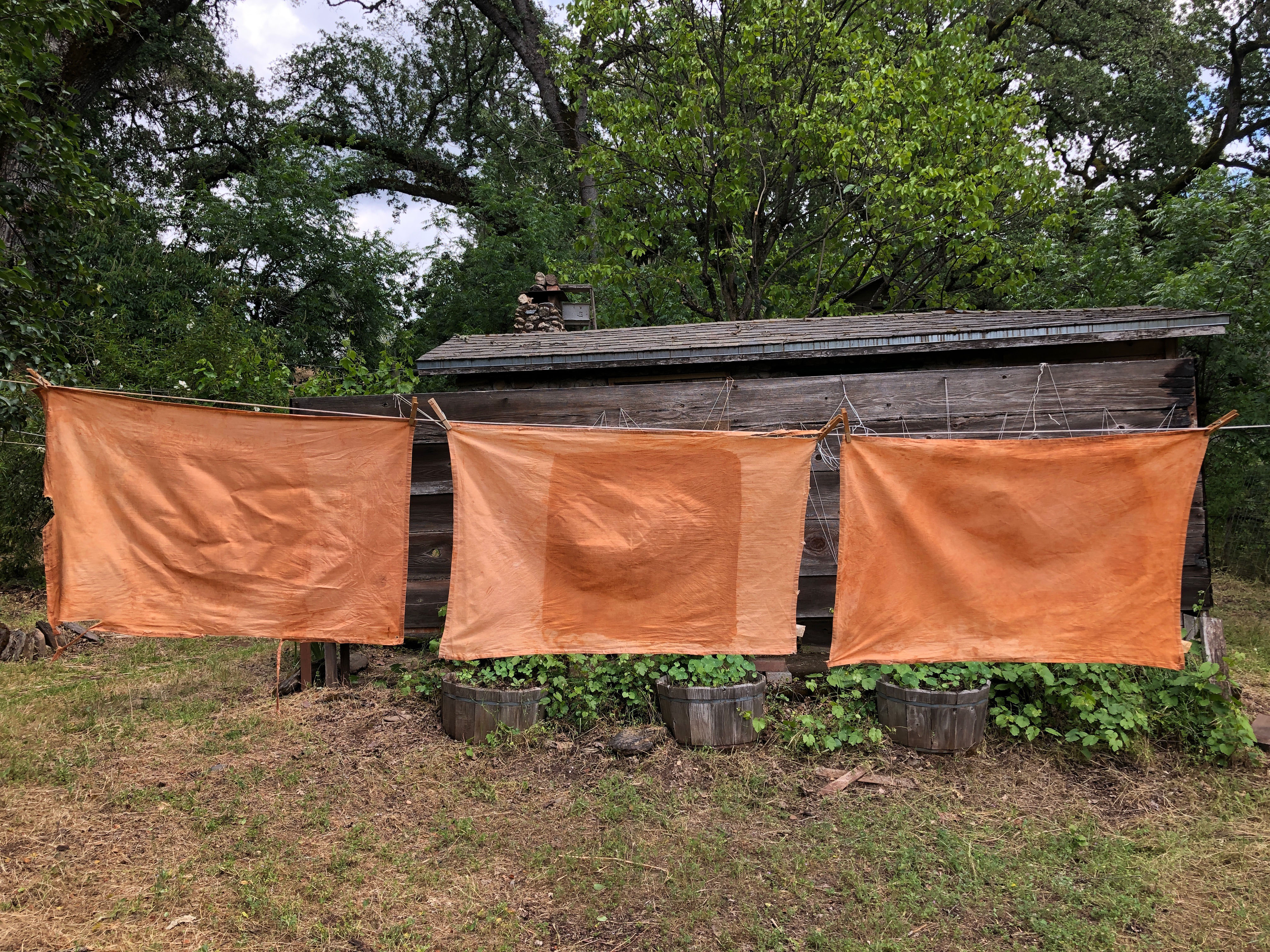 |